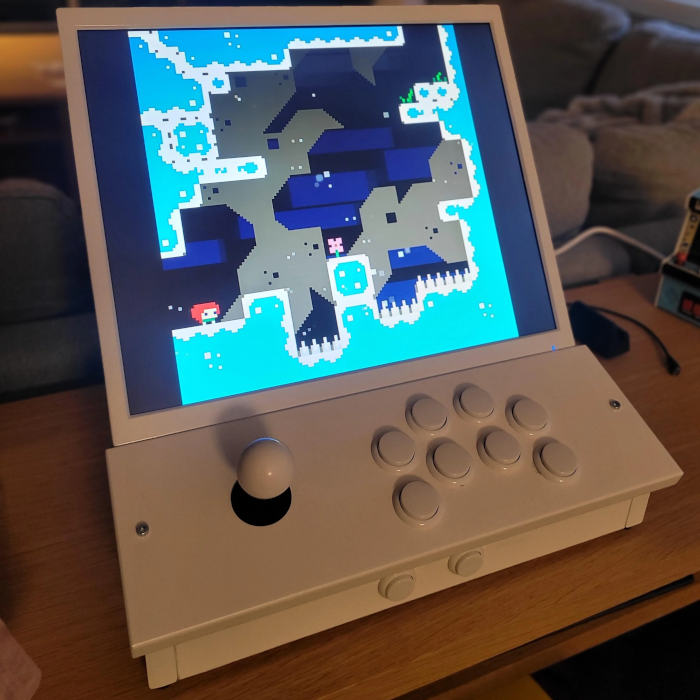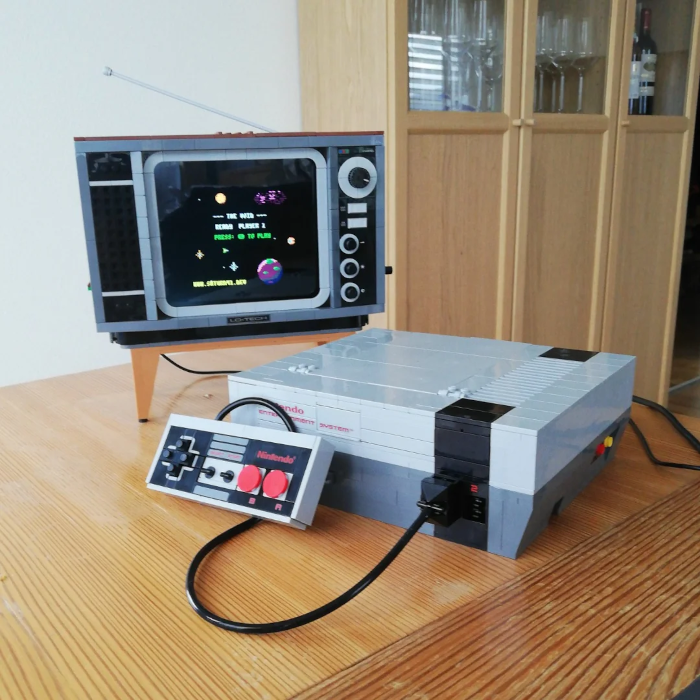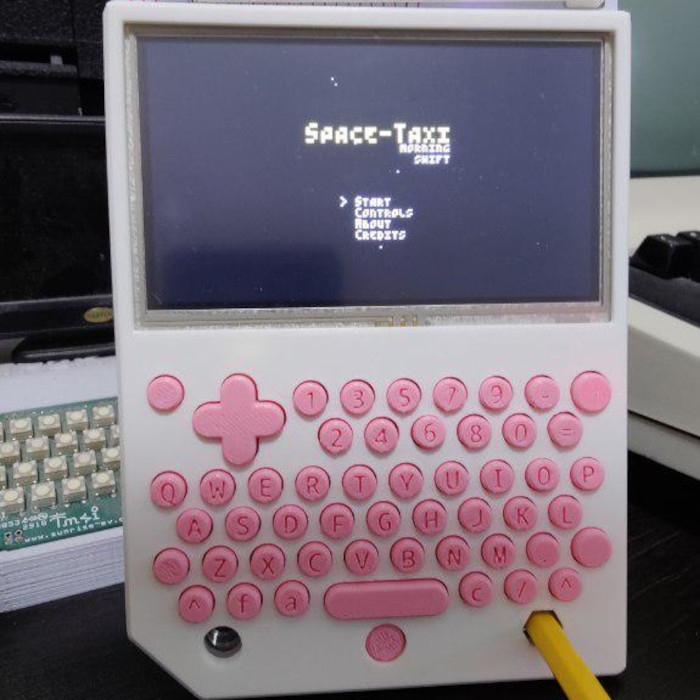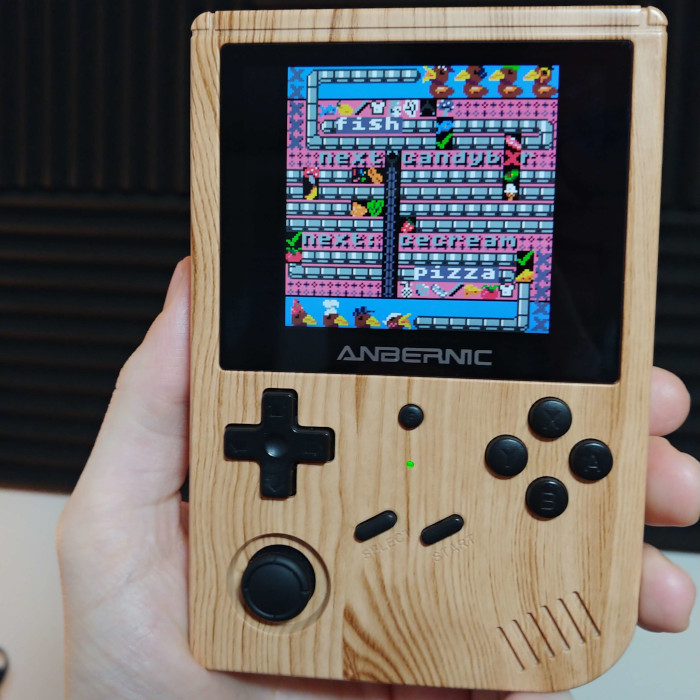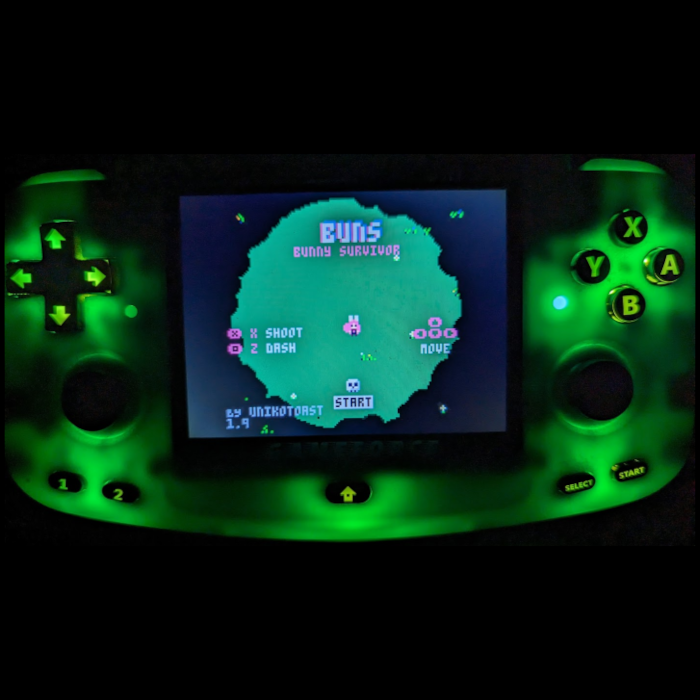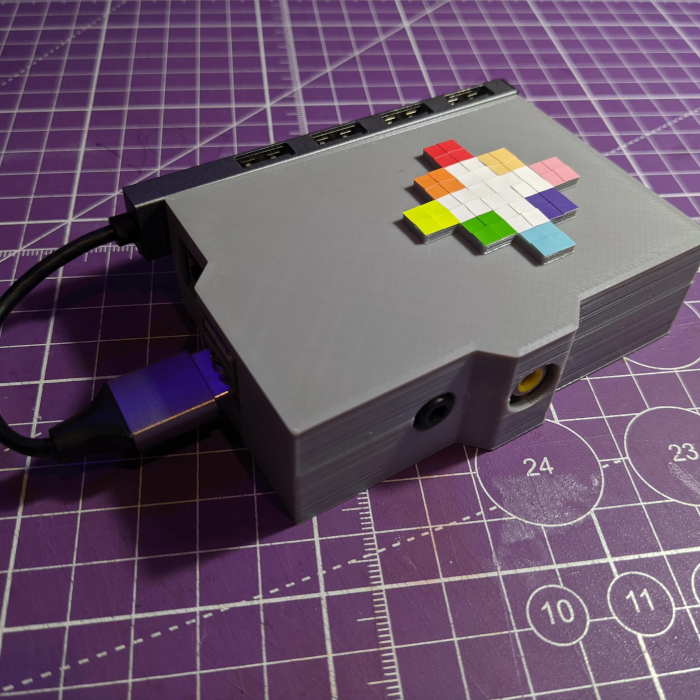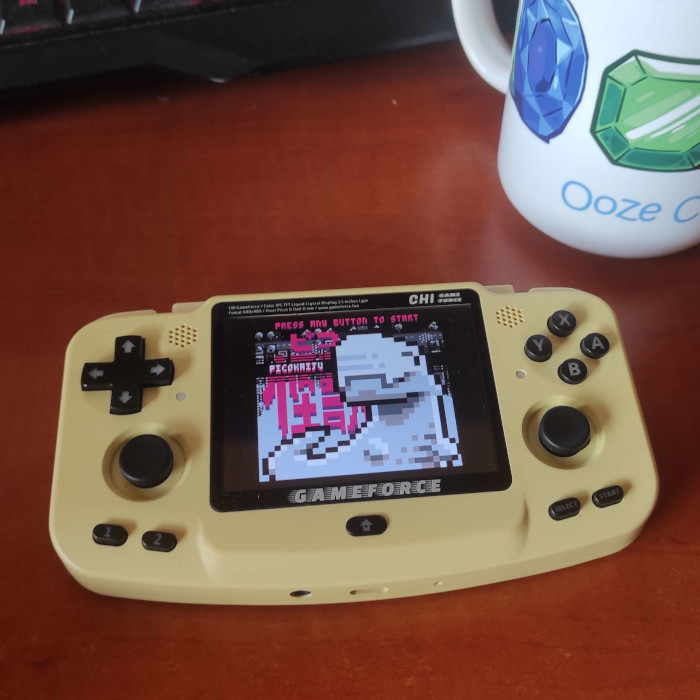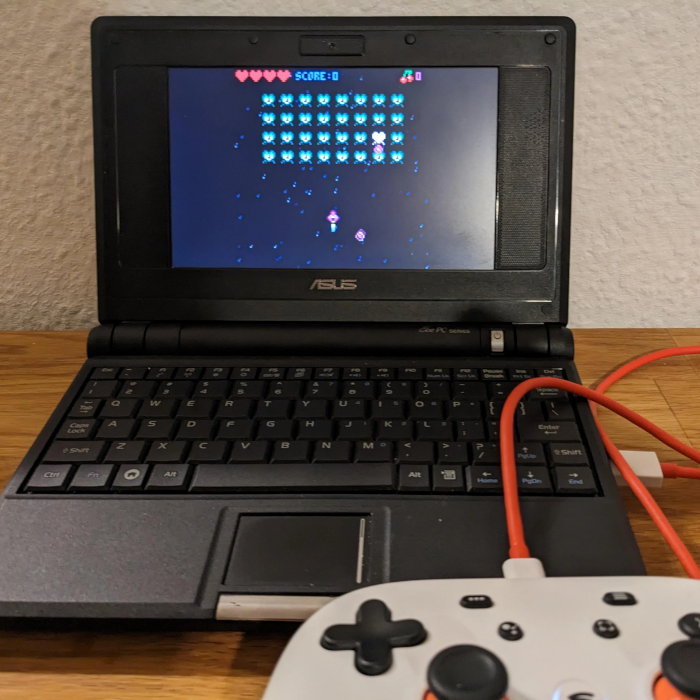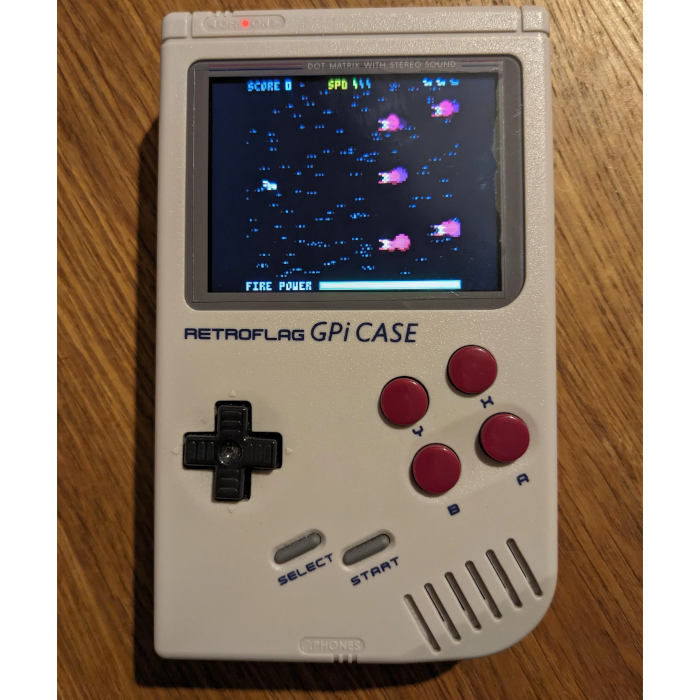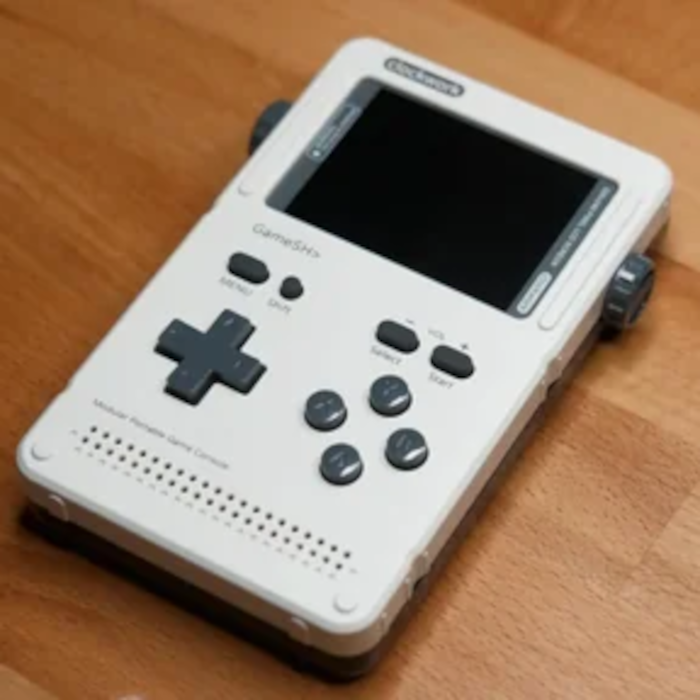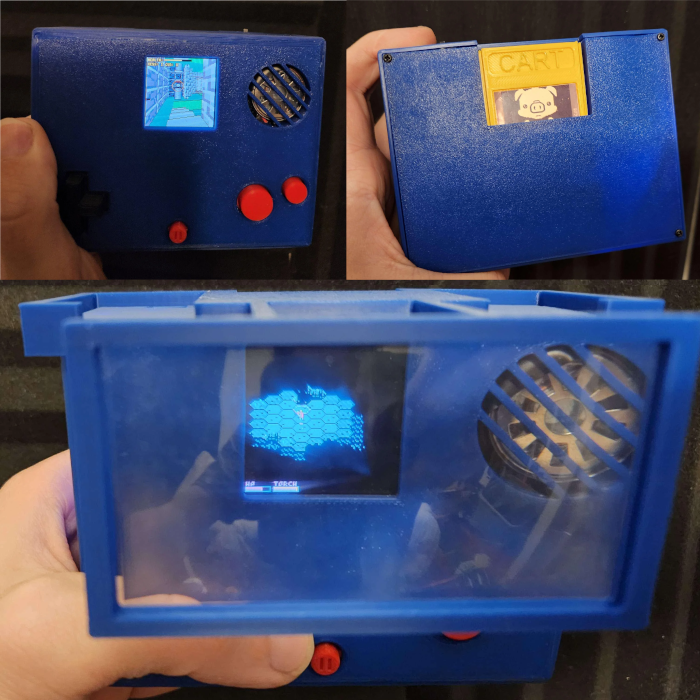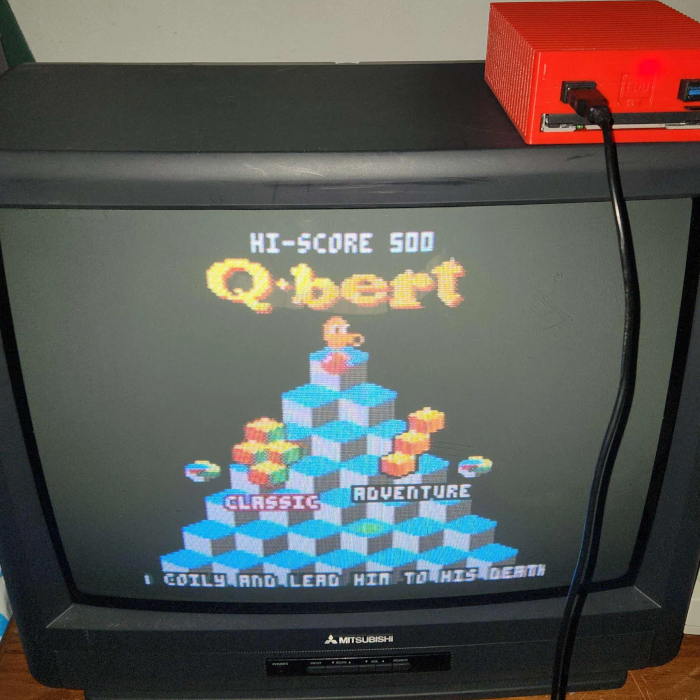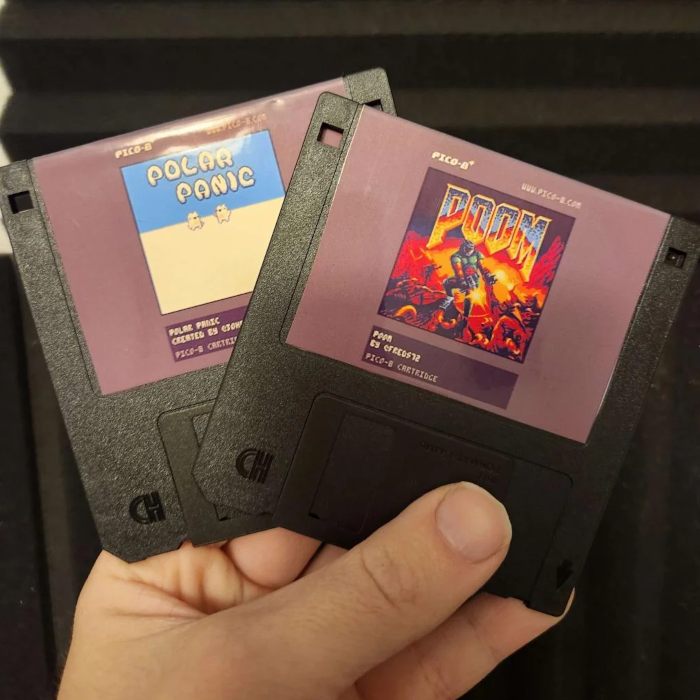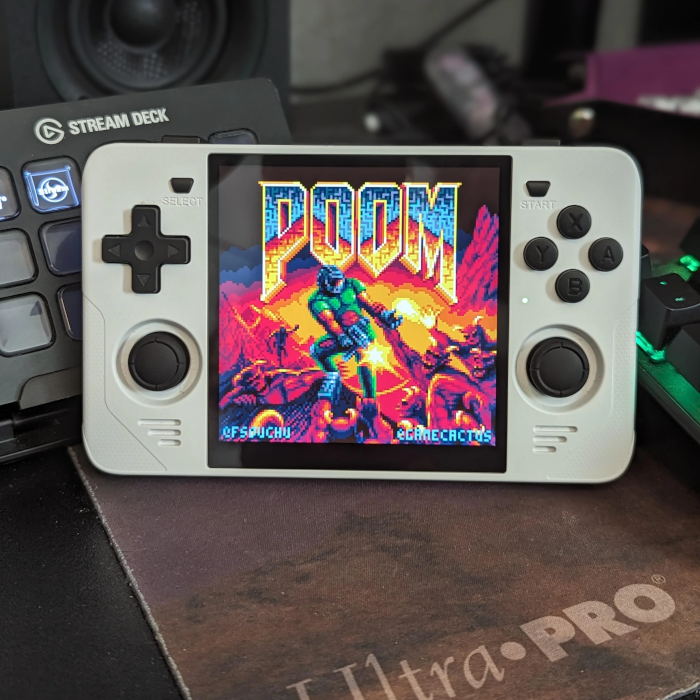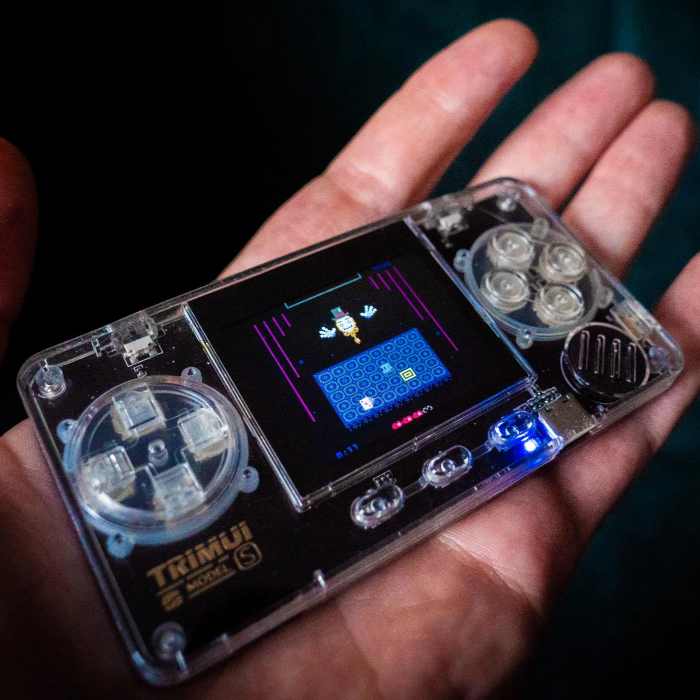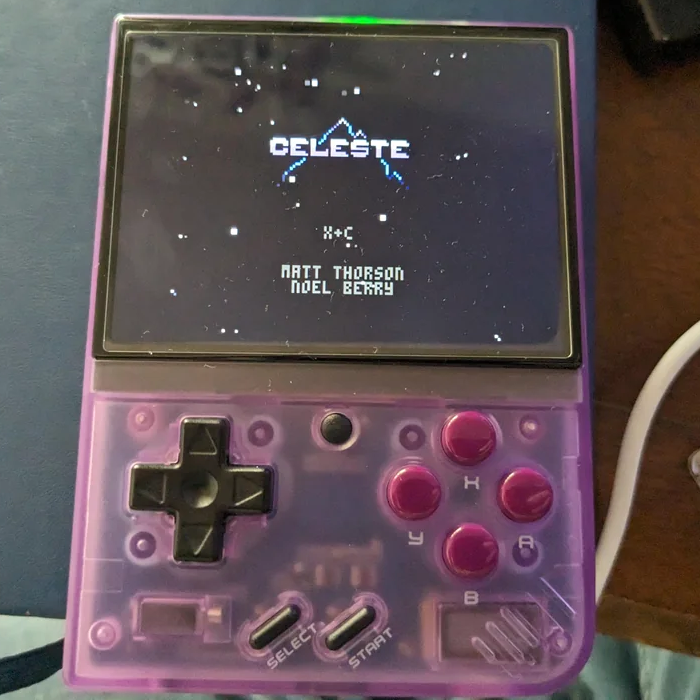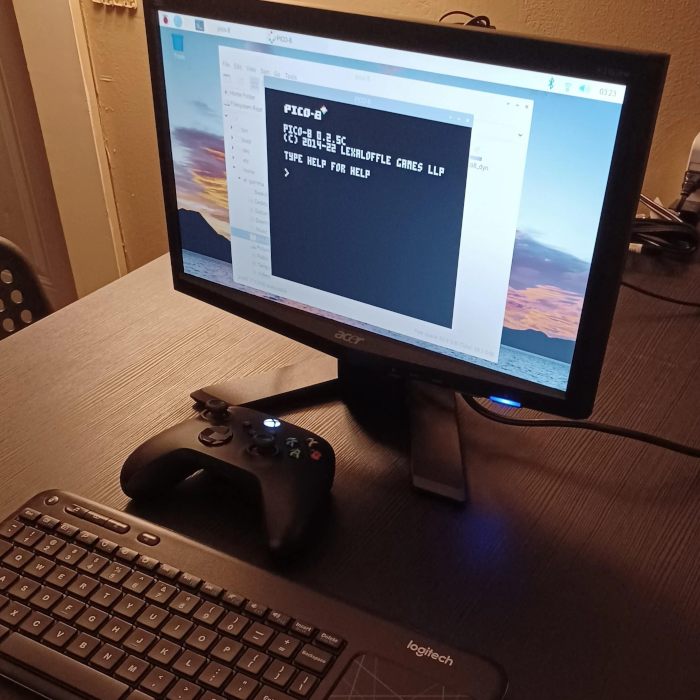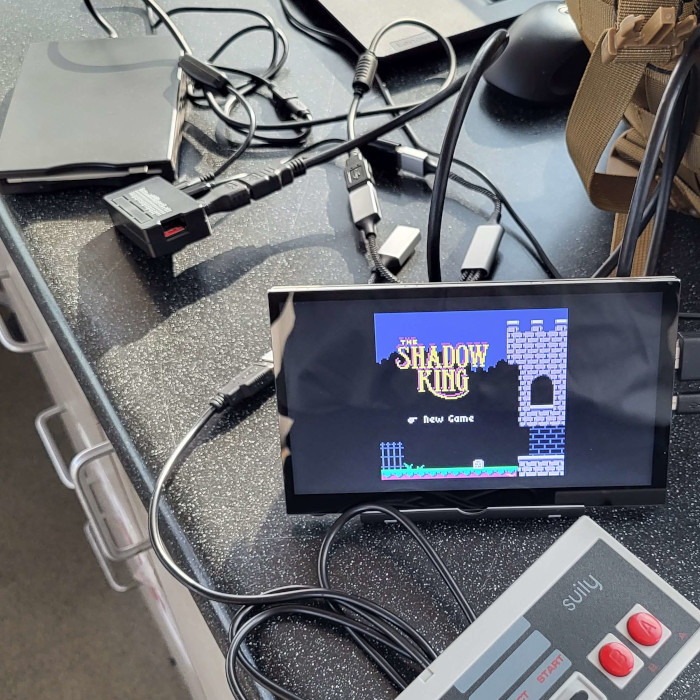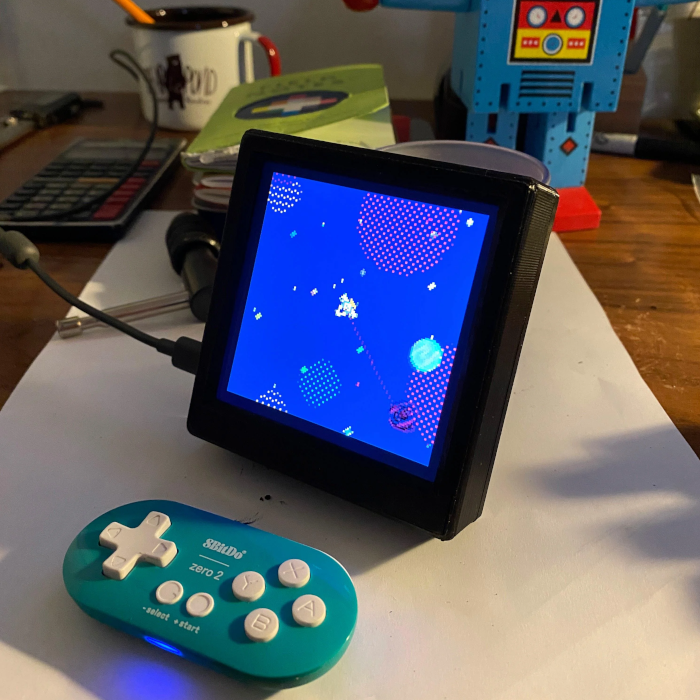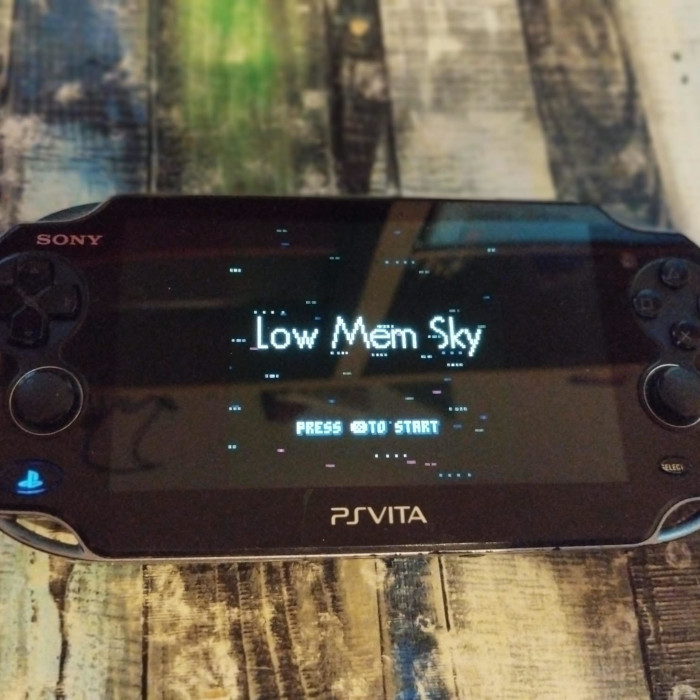pico-view:
October 2023

Hello Pico-View Reader, this spooktacular October issue is the tenth in the series! As the autumn leaves fall and a chill fills the air, we've brewed up a cauldron of content to inspire your creativity in the months to come.
We extend our deepest gratitude to our dedicated contributors for sharing their tricks and treats with us, and to you, our cherished readers, for sharing your time and keeping us motivated to provide more content. So, grab your favorite pumpkin-spiced beverage and cozy up to your screen. Happy reading, and may November bring you thrills, chills, and endless inspiration!
Authors:
MarechalBanane, Buck, Gravitoid, Sign, Krystman, Pico-8 Gamer, Extar Sourencho, Luchak, KumaKhan22, Feldo, xenobrain, Marina, Achie, and Nerdy Teachers
Contributors:
Pico-8 Gamer, Wolfe3D, BlueChik, C.Differ, The Tech Dweeb, theEsel01, ray_blake800, pancelor, 2bitchuck, phidinh6, antfortytwo, aus72, CounterAdmiralSvven, DOGNLABS, Far_Faithlessness724, fiftythirth, mesamunefire, GammaVolantis, icegoat9, GexGecko, Celesmeh
Contents:
-Cover Art and Illustrations by Werxzy
-PICO-8 Hardware - Nerdy Teachers
-Multiplayer, but not Really - MarechalBanane
-Isotool! - Buck
----------------------------------------------
-Cre8 Jam Results! - Judge Reviews
-SB-1800 Review - Gravitoid
-Sorted Inc. Review - Nerdy Teachers
-Yokohama Coffee Shop Review - Sign
-My Robot Review - Achie
-Where is My Soul? Review - Krystman
-Cell-027 Review - Pico-8 Gamer
-Rusted Century Review - Extar
----------------------------------------------
-Playtest, Playtest, Playtest! - Sourencho
-New Community Stars - Nerdy Teachers
-Featured Game Review - Redash - Achie
-Featured Interview - Pico Life - Tano x Marina
-PCM Recorded Samples - Luchak
-Outstanding Outliers - KumaKhan22
----------------------------------------------
-Upcoming Jams - Achie
-2-Buttons Jam - Feldo
-20 Second Game Jam - xenobrain
----------------------------------------------
-Random Reviews - New Release Recommendations
-Hardware Gallery - PICO-8 Community
-Prototype Party - Nerdy Teachers
-Closing Remarks
PICO-8 Hardware
by Nerdy Teachers
PICO-8 was the first "fantasy console" and that is a very appropriate term for two very good reasons. One, because it never actually existed during the era of games and game development which it simulates. And two, because once you become charmed under the PICO-8 spell, you begin to fantasize about having a dedicated physical device to run and play PICO-8 on!
Over the years, people in the community have been collecting, building, 3D printing, assembling, and even hacking ways to create hardware that will run PICO-8. We have seen everything from vertical and horizontal handhelds, desktop and wall arcades, to plug-and-play consoles, and more. I personally have wanted to buy and build more PICO-8 devices than I can count but I kept waiting for just the right one for me.
I'm old enough to remember the Golden Age of physical consoles, cartridges, and big bulky retro tech. The first games I ever played required me shoving this hard plastic square with a silly name of "floppy" into a loud beeping and buzzing gray monstrosity on the desk...and then waiting...and then needing to type in commands on a black screen called DOS just to get the game running!
Then came another series of beeping and screeching sounds, which my brain soon began to associate with the exciting thrill of computer gaming, so those harsh noises were received as the soft singing of angels to my ears. Needless to say, when I saw a PICO-8 device that used Floppy Disks to boot up games, I knew that was the one for me!
I literally took years to hunt for and acquire all the pieces I needed to assemble together my fantasy fantasy console and make it a reality as physical and tactile as my nostalgia dictated.

I was lucky that Pico-8 Gamer (with the help of grhmhome) recently went through the process of building a floppy disk PICO-8 system themselves using a Raspberry Pi Zero and, knowing I had all the components to make my own now, I asked him to take notes of the process in the hopes of finally building my own and collaborating on writing a detailed tutorial to help others do the same!
Well, to my profound joy, it was a glorious success!


Not only do I now have a stunning dedicated desktop arcade and collection of physical games for PICO-8, but I also broke the process down into the finest details to make a step-by-step tutorial that is as easy as possible to follow, including variations on the design and setup.
So we are happy to announce our new section here on the website simply named "Hardware" and we kick it off with two complete tutorials with images for every step:
We look forward to expanding upon this section and adding more options for the many ways you can build your own PICO-8 dedicated device. And if you are wondering what those other options are, well hold that thought because towards the end of this zine, there is an entire GALLERY of actual PICO-8 devices that are in the hands of PICO-8 enthusiasts around the world.

Now I just need to curate a list of my favorite PICO-8 games, put them on my legion of awaiting floppies, and slap on more beautiful custom labels. More on that adventure, next time!
Multiplayer, but not really
by MarechalBanane
Hey everyone!
I’m MarechalBanane, indie dev and PICO-8 enthusiast, and today I’d like to talk about unusual approaches to multiplayer that fit PICO-8’s constraints.
The Context
I’ve recently published in collaboration with c.diffin a chill little game named Will The Man Get Frog (WTMGF). It’s about writing haikus (japanese short poems) in a semi-random way. That means you get to pick random words just like you would pick random letters in Scrabble, only to arrange them into a short poem you might enjoy or find silly. Once it’s completed, you win… a .gif of your creation, to share or to keep as a souvenir. That’s it. No score, no levels, no competition. Just you and the words.
Picking Words

Composing

Final Result

After the release, a few people played the game on stream. They really seemed to have fun, but a common feedback was that a Twitch integration would be nice. Viewers liked suggesting words or phrases, and basically wanted to be more involved in the whole ‘composing together’ process. That was SO cool to hear! Not only did the game work, but I had underestimated its conviviality, and I wanted to explore that. So I set out to try and implement something around that “social, multiplayer-y” aspect.
The Problem
But alas! As great as it is, pico-8 has no native support for online multiplayer. Making anything requiring networking would prove reaaaaaally hard. Of course, the community has already researched GPIO-based solutions, like here and there (and also there, etc.). But it wasn’t compatible with my situation; my cart was almost full, and I had limited time and resources to spend on this feature.
So I had to get smart: how could I offer a design that would feel like a real online multiplayer, without actually making one?
The Solution
The solution was beautiful in its simplicity, delivered by a viewer in the chat as a question: “is there a way for different players to have the same starting word set? So they can write stuff and compare their results?” they asked. That’s brilliant! Simple and lightweight too!
Using that idea, I implemented a new game mode called shared game. Instead of picking their words one by one, players choose a 4-word password, and hit start. Then a game starts, with a seemingly random word set. That’s it.
The trick here is that the word set is bound to the password: each password will generate a different set as a result, but anyone running the same version of the game and entering the same password will always end up getting the same words. Which means people can share passwords and play the same games! Cool, right?
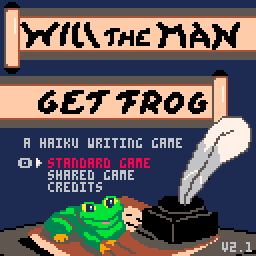
Try it in the actual game (v2.1), you’ll see!
Great! How do you do that?
That’s actually quite simple to do. First step is generating a random word set. It’s as easy as using the rnd() function to select random words in a table.
dictionary={"bla","blah","blaah","blaaaah",...}
wordset={}
count=42
while (#wordset<count) do
-- pick random entry in dictionary
local picked=rnd(dictionary)
-- remove entry from dictionary
-- to prevent duplicates
del(dictionary,picked)
-- add it to the word set
add(wordset,picked)
end
Easy enough.
Now, the problem with this code is that I don’t control the randomness. I get different results each time it’s run. Fortunately, the srand() function was created for this specific purpose. Just give it a number (called seed), and voila! You can be sure that the subsequent calls to rnd() will produce a deterministic (or reproducible) output. Let’s just add that at the top of our code:
seed=1337
srand(seed)Progress!
We now have a fixed seed and therefore a consistent output. Our last step will be to make the seed vary, based on the password input by the player. It will require a small amount of binary math, so feel free to refresh your memory here or there if needed.
Suppose we have a 30-word list in which the player gets to pick 4 words to form their password. Each word can be identified by its index in the list. Each index will be a value between 1 and 30. As it’s less than 2^5=32, it can fit on 5 bits. Hence 4 indexes can fit on 4*5=20 bits. PICO-8 numbers are 32-bit, so we have more than enough room to fit them into a single number! It’s just a matter of making the correct bitwise operations: offsetting the indexes to store them at the right ‘slot’ in the resulting number, and OR’ing them together.
-- let's say the player picked these indexes
indexes = {4,16,2,25}
seed = 0
for i=1, #indexes do
local index = indexes[i]
-- we compute where to store the 5 bits
--of the current index
local offset = (i-1)*5
-- in pico-8, the integer part of numbers
-- is stored in the last 16 bits, so we need
-- to offset by 16 to bring it back to the front
index = index >> 16
seed |= index << offset
end
srand(seed)
That’s all there is to it!
Now we have a program assigning a particular seed to any possible password, then generating a unique, deterministic word set. Note that the number of combinations for a 4-word password chosen among 30 is 30^4=810,000. More than enough to play for an entire lifetime without running twice into the same word set.
We now understand the recipe for creating generated content based on a password, which players can easily share. Awesome!
The Outcome
All in all, I’m really happy with how it turned out. I think this approach succeeds in creating the feeling of multiplayer without actually introducing one.
I would argue the core of WTMGF’s multiplayer experience is about being together during the creative process, just like in a creative writing meetup or any similar activity. The game only provides the bare minimum to recreate this sense of connection: the same rules and constraints for everyone, and the same starting set. Twitch, Discord or just good old real life will do the rest. Why the hell not? These communication tools are much more powerful and refined than anything achievable with PICO-8. It’s smart to acknowledge that and use it to our advantage.
Another advantage is that it allows asynchronous play: let’s say you want to play, but can’t access the network (or you have busy friends). Nothing stops you from starting a shared game by yourself. When you get a chance, you send your haiku .gif to your friend (the password’s on it). They can then use your password, compose their own poem, and send it back to you later. BAM! You’ve just reinvented epistolary gaming, exchanging letters like lovers from the XIXe century. How cool is that??
Of course, this design works only because it fits the game’s theme and atmosphere particularly well. Most action or real-time games would have a hard time getting away with this approach. But that doesn’t mean we can’t think about it, right? I mean, if you chose PICO-8 you probably like designing under constraints anyway.
Think about communication-based games like the great Keep Talking And Nobody Explodes and Space Team. Why not a game about spies solving puzzles individually and exchanging secret codes regularly to generate the next ones? Or timed platformers where players each see a part of the platforms, and share their info to finish the level?
I’m sure you’ll find better ideas easily. I’ve seen quite a few famous board games based on pure communication and information asymmetry, yet I feel it’s still quite niche in video games. Why not try and dig around in that area?
Who knows what you might find, there’s still so much to explore!
Isotool!
by Buck
Community is an amazing thing.
A group of people all interested and passionate about one or more things. The ability to share what you’re making or thinking of related to the topic and instantly be able to spark conversation is amazing! And PICO-8 is no different!
One great way people contribute to PICO-8’s amazing tight-knit community is people making carts and tools for anyone to use. Allowing people to build off of their work and make something greater.
I’m happy to be able to do the same with Isotool!
Isotool is a cart that’ll help you make games in a “fake 3d” or isometric style.
Isometrics
Isometric may not be the first thing you think of when you hear “retro game”, but I assure you there are many isometric retro games; all dating around the same time Super Mario Bros came out!
An inspiration for this project was me looking on the BBS and not finding too many voxel isometric games! (and certainly no standard between them). This is a travesty! Isometric games have such style and charm to them! Aswell as having untapped retro feel!

This is Ant Attack (1983), Made for the ZX Spectrum 8-bit home computer! It was one of the first games to have this style. All the way back in '83, before Super Mario Bros!! The isometric view has a very charming feel. It really fits the whole theme of a game. You view everything from a top down-ish view. As if you were playing with action figures on a table
However, the isometric style’s playful feel wasn't the main inspiration. That honor goes to The Science Elf’s video on making a minecraft sandbox builder on a calculator. They used an isometric style with shadow casting and it looked surprisingly pretty!

This project just started as a little weekend thing — as all month long projects do — and then I started making different models, using different methods, and testing to see which was most efficient and flexible.
So let’s go through my journey!
The journey!
First, how do we make scenes?
The map! Most people who use PICO-8 are familiar with the map, so it’s a perfect place to put the voxel data! Along with this, you get flags and a built-in map editor for free!
It works via layers. You draw each layer of the map, the dimensions being the ones you’ve specified. So if you’re making a 4x4x4 scene, the space it’d take up on the map would be 16 wide, and 4 tall.
Map Editor

Rendered

Performance
Performance in projects is never anything fun to think about.. But if you’re making a tool for people, you’d probably want it to be as performant as you can!
With this project, I ran into many performance issues.. And so did Ant Attack! Rendering anything 3d, or even pseudo 3d is difficult!
The first method you’d think of would be simply to draw things as if they were sprites, right? Just have cubes drawn fully on screen!


Well sure, that works, as long as you’re okay with your tool running at 15 frames per second at 400% CPU usage...
Why is the CPU usage so high?
Overdraw.
With drawing any sort of mass drawing graphics, you have to worry about things being overdrawn. Drawing pixels on retro consoles is expensive! And every pixel drawn has to be worth it — and yes, Even transparent pixels do cost the CPU processing. My solution was to separate the drawing of each side (left, right, top) so it can decide when to and not to draw a face. This saves so much processing — and more importantly. Prevents a lot of overdraw!
That’s better! What are we at? 150% CPU usage? That’s miles better! But still not under 100%.
What else can we do? Well if you’ve ever used a modern game engine casually. You never usually think of how expensive whatever math stuff you’re doing right?
Well when you’re iterating through 1152 blocks and doing many calculations on each one, they start to pile up —especially on retro hardware! So to reduce the CPU usage more we can precalculate everything! (or, calculate it once, then store it somewhere.) This brings the 150% CPU usage down to 120%!!


And even with this there are some drawing optimisations I’ve yet to implement due to deadlines and this project going on for a while.
Thank you for reading this lengthy ramble.
I’ll be making a lengthy BBS post that has everything you need to know, make sure to check that first if you have any questions!
I hope you have fun with this tool! I’d love to see all the wonderful isometric stuff you make!
- Buck
PICO-8 Cre8 Jam Results!
(Game Reviews by the Judges)

This was the first PICO-8 Cre8 Jam of hopefully many to come. It was hosted by Pico-8 Gamer and Sign, who included a handful of prominent members of the PICO-8 community to act as judges.
Achie, Extar, Gravitoid, LouieChapm, Krystman, and myself.
So along with the hosts, that made 8 judges who were tasked at assessing the games based on Adherence to Theme, Creativity, Technical Execution, Presentation, Gameplay Innovation and Enjoyment.
![]()
The jam development period began in September and lasted the full month. Then the voting period lasted the first 2 weeks of October. Several judges (Achie, Extar, Nerdy Teachers) even Twitch streamed their playthroughs and gave live reviews and feedback on each submission. It was there that I noticed we each gravitated toward a unique favorite and had a lot of good things to say about a specific cart that perhaps was overlooked by another judge.
So after the results came in, I reached out and gathered all the judges, asked them for their personal top 3 favorites and if they had any unsung heros that stood out to them specifically. Turns out, we all certainly agreed on the top 3 winners, but there were a few more honorable mentions that we felt deserved to be included in our spotlight.
These are each judge's thoughts on a specific game from the jam that we especially loved.
SB-1800
by Werxzy
SB-1800 is a command-line-based dungeon crawler game, taking the minimalism of PICO-8 and crosses into the realm of the real. If you like tinkering with code or the horror of being confined in a tank with limited perception, this is your game.
You remotely control a surveillance bot with less than 2K bits of programmable memory, a few functions, and the ability to see through a grainy camera. One can play with the directional and X/Z keys, or command inputs typed in via keyboard.
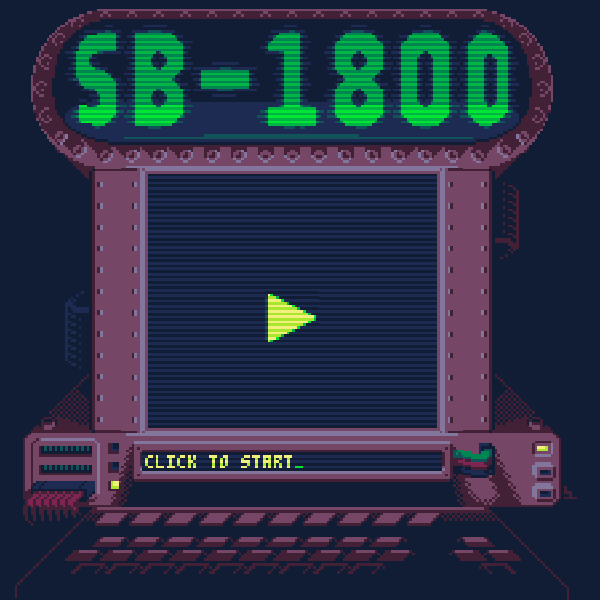
#1 Rated Cre8 Jam Game
Command mode is great, in that beyond typing 'MOVE' or 'TURN' to navigate similar to first-person dungeon crawlers, it auto-completes partially written commands and has a programmable computer. One may type 'TURN LEFT' or 'MOVE FORWARD' to navigate, or can simply type 'T L' or 'M F', respectively, further shortening them to 'T' and 'M' if you want to save time.
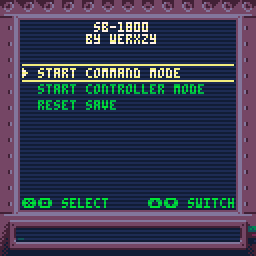
The world is rendered in 3D using ray tracing, represented in-game by a depth sensor, thus feeling very much like seeing via radar. Looking at puzzles, they ramp in difficulty quickly, going from a simple button press, to pressure plates, using bots as platforms, to relying on memory of the world beyond what you can immediately see.
Bots even interact using a function called 'WAVE' that activates switches, personifying them cutely.
Traversing the world, you have to complete simple spatial puzzles made incredibly more intimate by the manner in which you control the bot. Typing commands to do any action at all gives one the sense that you are operating in a very cramped virtual space. I would categorize the feeling as something adjacent to body horror, as your perception is limited to a scan function and some on-screen text prompts. Compounding that further is the fact that in command mode, you can change the resolution of your camera, creating a trade between speed and fidelity of sight in the world; If you want to see a frame rate increase, you will have to sacrifice resolution. I sensed subtle horror from my limited vision in a dark world, the time taken to navigate the environment, and a lack of other entities (aside from other bots you operate), creating a dread that there was more beyond what my camera showed me.
In summary, I would say this game has done something few PICO-8 games have; it has become on par in realism to that of a modern, graphically impressive AAA title. Not in its poly count or textures, but in that it captures the same realism found in books, or in analog horror media; the terror of imagination. The constraints of PICO-8's graphical ability add to the realism, that the depth-sensing nature of it gives a feeling that this is not some low resolution game at all, but in fact the real world seen through the poor eyes of an old computer.
The presentation of the Itch.io page, the minimal interface of the bot, its limited ability to see, all work incredibly well together! My hat off to Werxzy, for creating something subversive and sublime!
- Gravitoid (Cre8 Jam Judge)

Sorted Inc.
(Fully Automated Assembly Line)
by VoidGazerBon
This game has everything my brain loves: fast action puzzles, sorting things into their proper places, and working towards a goal of building something so well organized and efficient that I can sit back and feel the stress melt away because everything finally runs smoothly.

#2 Rated Cre8 Jam Game
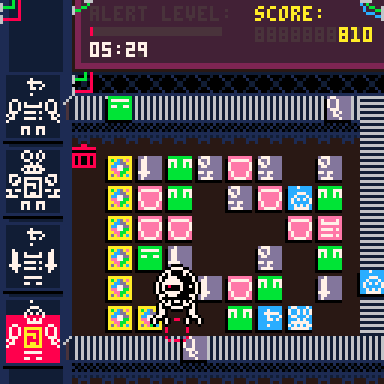
You play as a robot in charge of assembling other robots in 4 parts: head, torso, arms, and legs. Conveyor belts are constantly bringing new peices to your warehouse which starts out as full, but you can stack and move these parts around to your heart's content. But those conveyor belts don't pause, so while you are sorting, you better also keep a close eye on what bot needs assembling and what parts are heading towards it.
Allow the wrong piece to enter and fires start to break out in your warehouse. Luckily your bot comes equipped with an extinguisher!
The amount of small details and polish that went into this game is amazing. I think the normal difficulty is in a perfectly well balanced sweet spot but there are even multiple modes so you can find the right level of speed and stress you are in the mood for.
I can play this game for hours, allowing my mind to hyper focus on both the short term task of assembly and the long term task of getting my warehouse better organized.
It is somehow both stress-inducing and stress-relieving at the same time! Few games get that formula as right as this one does. It quickly made it into my personal collection of favorites.
- Nerdy Teachers (Cre8 Jam Judge)

The Yokohama Coffee Shop
by Donswelt
This casual yet fast-paced game stood out to me because of its charm. I love the setting, although we only see a small part of it. The game was inspired by Yokohama Kaidashi Kikō (English: Yokohama Shopping Log), a Japanese science fiction manga series about the daily life of an android who runs a coffee shop.

#3 Rated Cre8 Jam Game
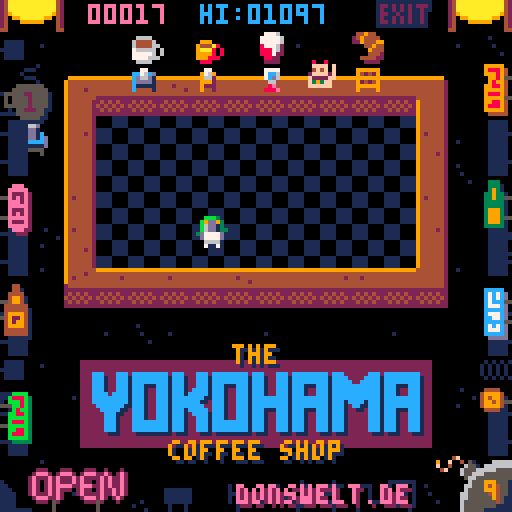
The game is set in the far future where mankind has perished, and robots have taken over. However, the market for coffee has not been lost in mankind's absence. You take control of a nameless android barista and you serve various robot customers coffee, tea, milkshakes, and croissants. Each customer wants something different, and it's your job to get them what they want!
I love this game because of its adaptability as well. It has three modes for anyone's playstyle to enjoy, from Casual to Rush Hour. Anyone can enjoy this, and you can play endlessly! All in all, it's a pretty good PICO-8 game.
- Sign (Cre8 Jam Host and Judge)
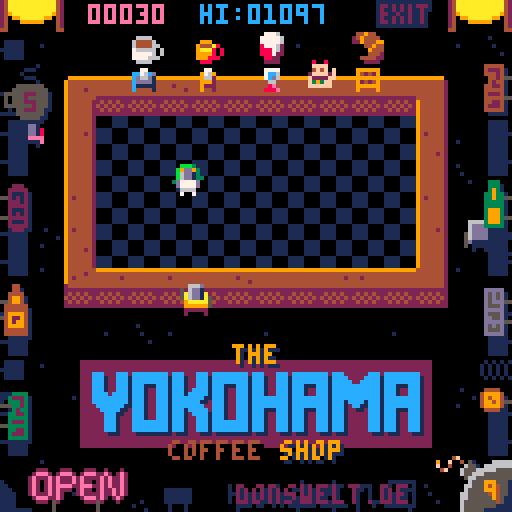
My Robot
by Mindless Turtle
My robot was a suprisingly full package after the initially minimal, terminal like splash art. I was expecting a programming game and got an amazing little adventure instead! Improvise, Adapt, Overcome!
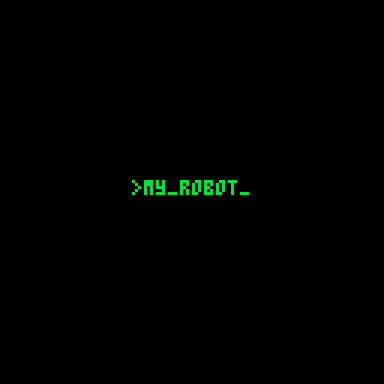
#5 Rated Cre8 Jam Game
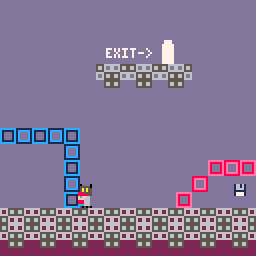
You play as a nephew of a scientist, who surprises you with a little robot, but one little caviat. Just as any good Nintento Quality Assurance person, he forgot to install the programs for the robot, so it is your job to find them all over the labratory. Grab the disks, look through the room and use the programs in the right way to solve the puzzles presented to you!
The game has an amazing childish charm to it thanks to the graphics which I feel really tie well into the world of a nephew playing around with stuff. Well polished with each room giving you a unique challange to solve with using all the little programs you have in your arsenal! Everyone should play and experience this cute little journey and cleverly designed gameplay mechanics!
- Achie (Cre8 Jam Judge)

Where is My Soul?
by P.B.E.S. Studios
A lot of the time, us game designers get so caught up in the intricacies of novel rules and mechanics that we forget about making our games fun. 'Where is My Soul?' shows how to do it right. Simple, yet instantly engaging mechanics wrapped up in a pure, radical indie aesthetic.
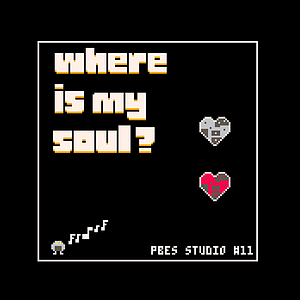
#9 Rated Cre8 Jam Game
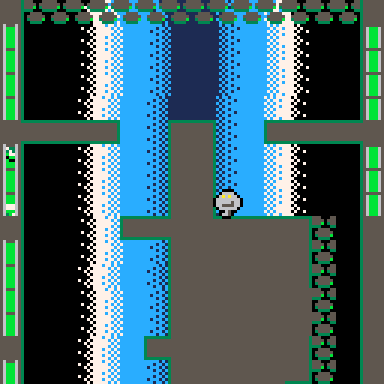
The game is split into two levels with two completely different game mechanics. The first level equips your robotic protagonist with the ability to jump. You race against time, ascending a shaft while being pursued by a relentless wall of hazardous water. It is the shorter and easier of the two levels but offers instant heart-pounding action like no other game in this game jam.
The second level equips your robot with a giant laser beam so ridiculously powerful that you can even use it to fly for a short period of time. You need to use this ability to overcome a surprisingly substantial platforming sequence full of enemies and destructible obstacles - a longer and more technical experience compared to the first level.
Both levels tell a delightfully campy story that could come straight from the sketchbook of a Bart Simpson. A robot is looking for a heart in the post-apocalyptic ruins of a nuclear plant full of zombies and green radioactive slime. The visuals perhaps don't have the polish of big Pico-8 heavy-hitters, but somehow that works in the game's favor. And if you pay attention, you'll learn to appreciate the strokes of some seriously skilled developers at work. From the level selection screen that doubles as a tutorial to the environmental storytelling of level 2 culminating in a shocking narrative twist. With a healthy dose of adrenaline and feels, this game has captured my heart from the very first second, and I’m sure it will capture yours too.
- Krystman (Cre8 Jam Judge)
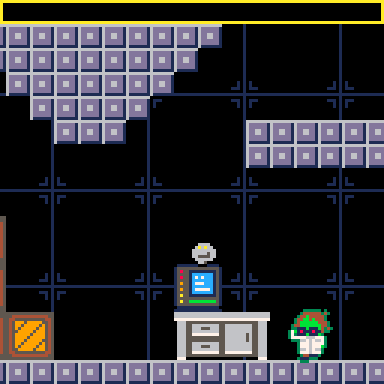
Cell-027
by Archonic
A point and click masterpiece in the making. This epic little action game will fulfill that strategic puzzle action craving. Just look at the incredible aesthetic of these levels!

#10 Rated Cre8 Jam Game *
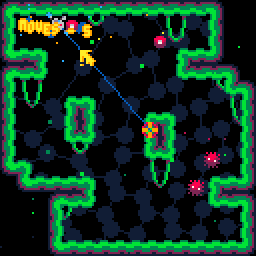
So you play as a small robot, named Cell, trying to rid the body of viruses. Taking on this task is no easy ask as you only have so many moves. Timing and skill are your friends here.
The enemies don't start moving until after your first click, so you can study each level and strategize your attack. Once you decide to make your first move though, you better be ready for some intensely quick and accurate clicking!
This game is an absolute gem in my opinion and I'm sure you'll all agree once you give it a chance. This game will definitely be on my list to place on the console as the developers continue to improve and polish it. I hope to see more games with this outside the box thinking in the future. Great work on this guys, and thanks so much for entering the Cre8-Jam!
- Pico-8 Gamer (Cre8 Jam Host and Judge)
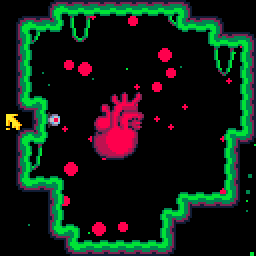
* Editor's Note: Unfortunately there was a mistake in the uploaded version for this game and during the voting, the game couldn't be updated. Because of that, many judges were only able to play the final boss level without any context. I believe the rating of this game would be much higher if judges experienced the full version, which you can now enjoy!
Rusted Century
by UselessFodder
Rusted Century is a post-apocalyptic survival game by UselessFodder. You take control of a high tech robot soldier, a relic of a forgotten war on a quest to discover a limitless power source in order to live forever. The game tasks you with exploring a post-apocalyptic world, dodging bandits, soldiers and rogue robots.

#11 Rated Cre8 Jam Game
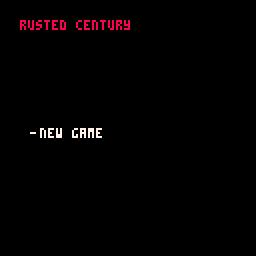
Your constant enemy is your dwindling fuel reserves. Marching across the map decreases your fuel gauge at a frightening rate, you must explore outposts and towns for new parts. Unlike most games you are trying to downgrade your character, finding older, less effective, but less power-hungry components in order to extend the range you can cover.
This downgrading system creates a unique twist to what would otherwise be a very familiar way of progressing your character, and creates a natural steepening difficulty curve with your character becoming weaker as the game progresses.
Rusted Century is UselessFodder's first Pico-8 game so it’s a pleasure to be able to shine a light on it. The gameplay reminded me of the exploration and scavenging of the first Fallout game. The desperate search for fuel and upgrades whilst trying to take as little damage as possible is the essence of the survival genre. I'm also just a sucker for post-apocalyptic settings with ancient robots!
- Extar (Cre8 Jam Judge)

Playtest Playtest Playtest!
by Sourencho
Hi, I'm Sourencho, a game dev in New York, currently working as a senior software engineer on Slime Rancher 2. You might know me from my tweetcarts which I still enjoy making. Today I'd like to share what I learned while making a PICO-8 game a couple years ago, called Mimic.
Mimic is a short puzzle game where you move in the pattern of animals to take their form.
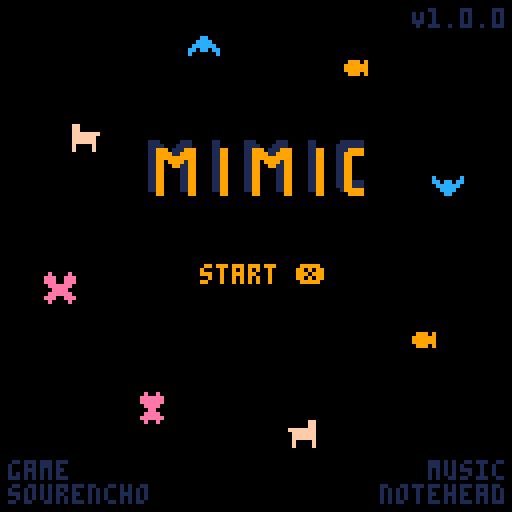
The seed was planted during a game jam and after tinkering at it for over a year I released it on itch.io. It got pretty good reception and I learned a lot throughout the development. Below are reflections on some of those learnings with concrete examples to provide ample context.
Placeholders Are Your Friend
During development I often had miscellaneous tasks such as drawing a new creature or adding a new visual/sound effect. Deterred by intimidation and uncertainty, I would procrastinate on these tasks and they would eventually become frustrating blockers.
A great strategy against this was plopping down a placeholder. This often prevents a game element from becoming a blocker and also has an added benefit: every time the placeholder comes up during testing you are passively fleshing it out, just by observing it in context.
An example was the placeholder sound effect that triggers when a player changes the pattern of an animal. The placeholder didn’t sound good but it had a downward tone to imply that the animal was startled or confused by the change. Players interpreted the negative sound to mean that they had done something wrong and thus avoided changing animal patterns. By having something there for playtests, when I eventually designed the final version of this sound effect, I knew not to use something that sounded negative.
Importance of Playtesting
Throughout the process of working on Mimic, playtesting was a great key component. I constantly playested during development, even when it looked ugly and had rough edges.
My audience was many different kinds of players: gamers, strangers, family, other gamdevs, etc. By observing where and why people had trouble with their experience I could fine tune things like game difficulty and cutting out fluff or unintentionally confusing elements. This resulted in fairly polished levels and controls that allowed most players to feel accomplished and enjoy their time playing the game.
Playtesting was particularly valuable when I could watch it live. If players were uncomfortable sharing their screen, I tried asking for a recording. This real-time observation helped particularly in that I could watch behaviors and interactions that are difficult to communicate during a written survey or feedback conversation.
However, finding these playtesters was a bit of a challenge, in particular finding players who had never tried the game before. Fortunately, PICO-8 runs on every platform so it was easy to send or bring the build to events or communities like, NYU Playtest Thursdays, Lexaloffle BBS, Recurse Center and several discord communities. I could also pull out my phone and playtest when hanging out with my friends and family through BBS.
One example of interactions I noticed through testing is that players did not realize they could push small tiles - one of the key mechanics of later levels in Mimic. To fix this, the level that introduces this mechanic now requires pushing a block to start. Also, all pushable blocks shake to hint that they are mobile.
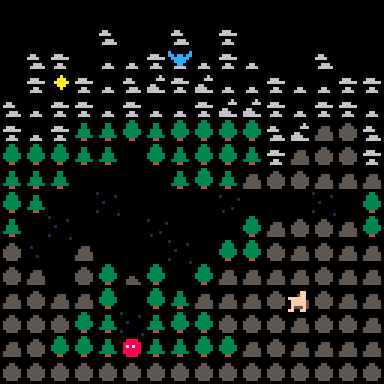
Or, players would get stuck on the river of Level 1 because it was unclear that they could jump directly from the water onto the yellow diamond. Instead, they would try to find a way to get on the little island between the rivers. So I made the river fully surround the diamond to remove the ambiguity.


I highly recommend playtesting your game! Watching people play - even in early builds - can shed a lot of light on accessibility, functionality, and enjoyability of what you are creating. The communities you're in and around are filled with people who are willing to help test your ideas, and a little playtime can go a long way!
New Community Stars
by Nerdy Teachers
![]()
Earlier this year we came together to create the mini-biographies page with so many of the biggest names in the community. It was a lot of fun to forge those connections and learn so much more about each other in the process. That page stands as a great way to break the ice and introduce ourselves to new members.
If you haven't seen it yet, read them all here:
This month, we'd like to announce the addition of 4 more stars!
Remy

I'm Rémy! (Also known in the community as trasevol_dog) I made quite a few of my first games on PICO-8, experimented a lot with it, and wrote a bunch of programming guides on my website that used my PICO-8 experiments as basis! I made One Room Dungeon, Lands of Yocta, Gar's Den, Embrace, and more! Right now I'm working on my own game engine inspired by PICO-8, called SUGAR, and I'm making games with it for my indie studio PUNKCAKE Délicieux! We're mostly known for our chess game Shotgun King, but we actually made a new game every month for most of 2021 and 2022 and we're preparing to do it again in 2024!
iivii!

For those who don't know me, I'm iivii (pronounced Vee) - except on reddit, where I am CoreNerd. I am the moderator of the PICO-8 Subreddit. I run the unofficial PICO-8 api. I'm also the guy working on the PICONOMICON. I find teaching others just as rewarding as making games, much like NerdyTeachers. I think of myself as the leprechaun of the community - always popping up with little golden coins from a pot that somehow hasn't emptied yet.
Werxzy!

I'm mostly known for my games, Sokocode, Slime's Light, and SB-1800, and their stylish itch.io pages. I've spent years working on tons of game prototypes, many of which haven't fully completed or been shown publicly. Though switching to PICO-8 really helped with finally completing some of these. I still have a huge backlog of ideas that I eventually want fully realized.
Pico-8 Gamer!

Hi, I'm Pico-8 Gamer and I just want the PICO-8 community to pop! I create PICO-8 gaming content on Youtube and I host the PICO-8 specific game jam called the Cre8-Jam. As I learn more game dev with PICO-8, I'm certain I can make a staple of PICO-8 in the game development community as a whole. PICO-8 is the best game development tool hands down. You can't convince me otherwise.
We are keeping our eyes on you rising stars out there so keep working hard, helping others, and making amazing PICO-8 games, tools, and content.
![]()
Featured Game Review
Marshowcase
by Achie
![]()
If you are active in the PICO-8 main Discord you are probably familiar with today's featured game. We were teased for so long with various amazing little screenshots and gifs. And just like waiting at the last boss, I was eagerly waiting for the eventual release. This game inspired me for so long to work on my projects, that I knew I wanted to play it as soon as it came out and just like how we quickly uproot enemies, we were suddenly given the release!
So let’s load the game to get back what we gave long ago and jump into the world! Marsho needs our help!

It started in 2020??? Oh my god, I was fangirling on this game for too long … Released on the 16th by SmellyFishSticks, Re-Dash captures the old-school platformer charm combined with the new feel of PICO-8 perfectly. It feels retro but then it feels new and cool at the same time.
In the pre-cursor game, called Coindash we got our game held back by Mo, so our job is to get to his island and reclaim our game once more.

You can move around with the ⬅️➡️ and jump with the secondary button of 🅾️. This is all we know so we start our little journey by entering the door on the top! The world is nicely built up with large spaces giving you time to fool and jump around!
Wait, what is that???

Not taking any chances we can stomp on the enemy by jumping on their head, collecting coins along the way. This is where we learn what the secondary button does, we can find fruits, enemies and coins dug into the ground! All those can be uprooted by ❎ and taken into your hands directly.
What to do with them? They can be thrown or placed down! Throwing apples will hurt enemies (if you are skilled, unlike me) and defeat them instantly or you can place apples down to serve as little stepping stones!

Various enemies with their own logic live in this little world, which always feels alive. Things interact with each other really well, give it a round and you will see!
Of course we have the name sake of the genre, platforms! They move up-down left-right and you bet enemies use them—sometimes as just sleeping spots, but they do use them! Our end goal is to find the end of each level and collect the shiny Warp Stars to bring us ever closer to Mo and our precious game!

Caves, towers and really dark underground areas are standing between us and the end goal, with new enemies and mechanics sprinkled in from time to time. Grab boxes, avoid spores and jump around on the local fauna!

The game is just beautiful on all ends! Sprites are well made, animations are cute, the background and the maps are just so well made and tuned, it was worth all the wait! Spores falling around, all the squish and bounce animations tuned to their absolute charm, I’m just loving the game through and through. The fact that Marsho falls asleep if you are AFK long enough with little bubbles is just beyond juicing a game up!

Don’t let the cute charm of the game fool you, it has a proper retro difficulty attached to it! It doesn’t feel as ruthless as the NES era ones, but it doesn’t pull any punches. Collisions are really tight, fair once you know them, but tight nonetheless!
The music and sound effects are really well made as well! I found myself humming along to the music and all the sfx tie into the charm of the game, I cannot really emphasize how the game holds this Jelpi-like cuteness to it!
8 Levels of fun await you with a really cool boss design in my opinion. It is a tad hard but enjoyable. The always-changing bossfight is where your creativity can truly shine! Just as much as how SmellyFishSticks' creativity and skill shines through this whole project!
I highly advise anyone to try it out, even for those who are not the closest fans of platformers as I feel the game will become one of the classics of the PICO-8 library!
About the Author
I stream PICO-8 gameplay and PICO-8 game development on Twitch, as well as write detailed dev logs and a game review series called "Pico Shorts".
Thanks for reading!
![]()
Featured Interview
Pico Life
by Marina
![]()
( This is an interview with a PICO-8 game developer and enthusiast in Japan named Tano. Tano works on a Japanese fanzine called, "Pico-Life". It covers his and a few other's adventures with Pico-8. I do not speak japanese but I used ChatGPT to translate during the interview and it seemed to work well, but apologies for any mistakes. )
Marina: なぜ『Pico-Life』ファンジンを始めたのですか?
"So, why did you start 'Pico-Life'?"
Tano: PICO-8という素晴らしいツールを広めたいと思ったからです。
"Because I wanted to spread the word about this amazing tool called PICO-8."
Marina: そのようなイベントへの参加に関する記事を要約できますか?
"Could you summarize an article which covers attending an event which you spread the zine at?"
Tano: わかりました、やってみます。 イベント毎に企画、準備、当日の出来事、反省を書いています。 自分もそうですが、読んだ方のイベントに参加するハードルが、下がるのを期待しています。
"Understood, I'll give it a try. I write about the planning, preparation, events that take place on the day, and reflections for each event. Not only for myself, but I hope that by reading it, it will lower the barrier for those who want to participate in events."
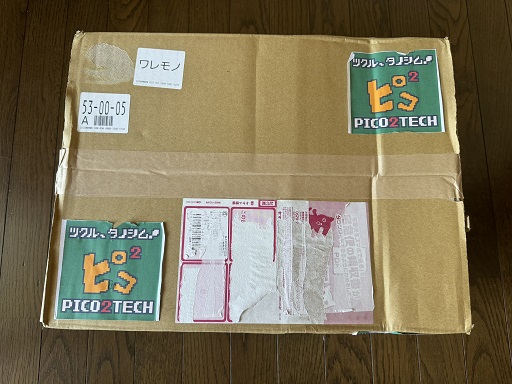
A shipment of the "Pico-Life" Fanzine
Marina: 私の知る限り、日本には多くのイベントがあり、インディーゲーム開発者が参加できるようです。それが羨ましいですね。あなたにとって一番お気に入りのイベントは何でしたか?その理由も教えてください。
"To my knowledge there are a bunch of events in Japan that indie devs can attend, I envy that. Which event has been your favorite, and why?"
Tano: ダントツでゲームレガシーです! このイベントは、レトロゲーム愛好家の祭りで、作品などの展示や頒布はもちろん、レトロゲームミュージックを流したり、お菓子を販売したりで、「祭りを楽しむ」空気がよても良かったです。 私は、PICO-8ファンジン「ピコライフ」の頒布とPICO-8シューティングゲーム「レガシーシューター」の試遊で参加しました。 また参加したいと思っておます。
"It was an outstanding gaming legacy! This event is a festival for retro game enthusiasts, where they showcase and distribute various works, play retro game music, and even sell snacks. The atmosphere of 'enjoying the festival' was fantastic. I participated by distributing the PICO-8 fanzine 'Piko Life' and offering a trial play of the PICO-8 shooting game 'Legacy Shooter.' I definitely want to participate again."
Marina:あなたは私をさらに嫉妬させるわ!日本の多くのイベントが、日本のインディー/レトロ/pico-8シーンを他の場所と異なるものにすると言うにはどう言うのでしょうか?
"You make me even more jealous! How would you say the many events in Japan cause the Japanese indie/retro/pico-8 scene to differ from else where?"
Tano: 他国とのイベントの違いですか? うーん、他国のイベントに参加した事が無いのでわかりませんが、こちらでは、企画運営する人、それぞれの得意や好きでブースを開く人、当日来て参加して楽しむ人、それぞれが協力しあって出来るもので、とても尊い時間と空間だと思ってます。 そんなイベントが、海外にもあると思いますし、そう信じたい!
"What are the differences between events in other countries? Hmm, I haven't participated in events in other countries, so I'm not sure. However, here, it's a collaborative effort between the organizers, those who open booths based on their specialties and interests, and the attendees who come to enjoy the event. It's a precious time and space where everyone works together. I believe that such events exist in other countries too, and I want to believe so!"
Marina: "調べてみましたが、あなたの言う通りです!ただし、それは都市部でより一般的です。これらのイベントがゲーム開発や「PICO-8」に関わるコミュニティにどのような影響を与えると思われますか?
"I've looked into it, and you're right! However, it is much more prevalent in urban areas. How would you say that these events affect the community around game dev/PICO-8?"
Tano: 人間は、他人が楽しそうにやっているのを見ると、興味を持ちます。 そして、PICO-8は表現ツールとして、取り掛かり易いものだと思っています。 なので、PICO-8ユーザーが集まり、楽しいイベントをしていれば、興味を持った人が来てくれます そして参加し、影響を受け、その日からプチクリエイターになるのです。 人の数だけ表現があり、知恵が有ります。 お互いに良い影響を受け、助け合ったりしていけたらと思い、定期的にイベントに参加しています(私が今出来る事です)。 人生の一部に、そんな表現活動があることは、とても素敵な事だと思います。
"When humans see others enjoying themselves, they become interested. And I believe that PICO-8 is an accessible creative tool. So, if PICO-8 users gather and host fun events, people who are interested will come. They will participate, be influenced, and become mini-creators from that day forward. Each person has their own expression and wisdom. I attend events regularly with the hope that we can positively influence each other and help one another (it's what I can currently do). Having such creative activities as part of life is truly wonderful."
Marina: 「西洋人として、私は外国のPICO-8コンテンツをあまり見かけないと感じています。最近では、CALIXJUMIOやUCHUZINEがありますが、それ以外はほとんど目にしません。実際、それが私の「PICO-LIFE」への興味を引き起こしました。外国の世界、「PICO-8」です。お聞きしたいのですが、日本のPico-8コンテンツはどこかに隠れているのでしょうか?異なるソーシャルメディアやハッシュタグを使用しているのでしょうか?」
"I notice that as a Westerner I do not see very much foreign PICO-8 content, well besides CALIXJUMIO, and UCHUZINE as of late. In fact, it's what sparked my interest in "PICO-LIFE". A foreign world of "PICO-8". I have to ask, is there somewhere where Japanese PICO-8 content is hiding? Am I not looking hard enough? Do you guys use a different social media or a different hashtag?"
Tano: 私は日本人で、個人の見解となりますが、PICO-8ユーザー(オーナー)は、幾人か居ると思いますが、アウトプットしているユーザーは、ほんの一握りだと思います(日本人は恥ずかしがり屋が多い)。 また、突発的に1作品を作って発表して終わらせてしまう人も居ました(他にもやることはありますからね)。 Xで見ている限りは(日本のPICO-8ユーザーの一番のコミュニティだと思います)、頻繁にハッシュタグも付けて(#pico8)投稿している人は、数えるほどです。 多分、他の国のユーザーの人が見ても少ないと感じると思います。 なので普及したり、アウトプットしてもらえるような活動を私はしているのです。
"I am a Japanese individual, so this is my personal perspective, but I believe there are several PICO-8 users (owners) in Japan, but those who actively produce and share their work are only a handful (as many Japanese tend to be shy). Additionally, there are also some who create and present a single piece of work spontaneously (as they have other things to do as well). From what I can observe (I believe it's the largest PICO-8 community in Japan), there are only a few people who frequently post with the hashtag (#pico8) attached. I think even users from other countries would feel that it's a small number. That's why I engage in activities to promote and encourage more output from users."
Marina: そして、一般的な「PICO-8」ユーザーが「PICO-8」の制作を増やすためにどのようにできると思いますか?
"And how do you think the average PICO-8 user can do to help increase PICO-8 output?"
Tano: 自ら作品を作って公に公開することです。 それは、落書き感覚で描いた128x128の一枚の絵でも良いのです。
"It means creating one's own work and publicly sharing it. Even a simple 128x128 pixel art created with a doodling mindset is perfectly fine."
Marina: お気に入りの記事のいくつかのリストを、あなたの雑誌から教えていただけますか?
"Could you give me a list of a few of your favorite articles from the zine?"
Tano: お気に入りの記事は、
ピコライフ1号
【ピ コラム】サークル参加出来た
【ピコテク】文字、囲んでますか?
ピコライフ2号
【ピ コラム】東京ゲームダンジョン3へ参加
の3つです。 明日の名古屋コミティア63の準備のため、返事が遅れています。 ごめんなさい。
"My favorite articles are:
Pico Life Issue 1
[Pico Column] I was able to participate in a circle
[Pico Tech] 'Are you surrounding your text?'
Pico Life Issue 2
[Pico Column] Participating in Tokyo Game Dungeon 3
These three articles are my favorites. I apologize for the delayed response as I am preparing for tomorrow's Nagoya Comitia 63."
Marina: 心配しないで、名古屋委員会について聞いたことがあります。個人的なお願いがありますが、ブースの写真を撮っていただけますか?お願いします!ありがとう!明日の名古屋委員会で何を期待していますか?
"Don't worry. I've heard about Nagoya Comitia... I have a personal request, would you mind taking photos of the booths? Thank you so much! So, what are you looking forward to at tomorrow's Nagoya Comitia?"
Tano: 写真撮って送りますね! 期待は、新たなPICO-8ユーザーとの出会いです!
名古屋コミティア63のブース写真です、納めください
"I will take photos and send them to you, okay! My expectation is to meet new PICO-8 users! These are booth photos from Nagoya Comitia 63, please accept them."
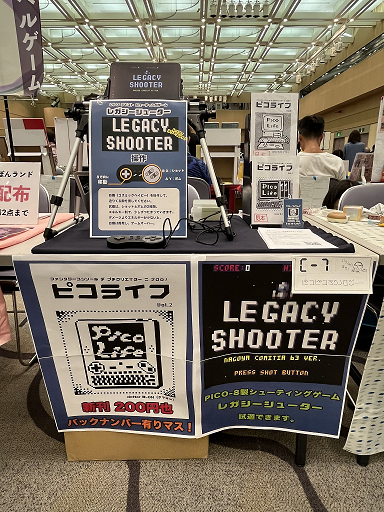
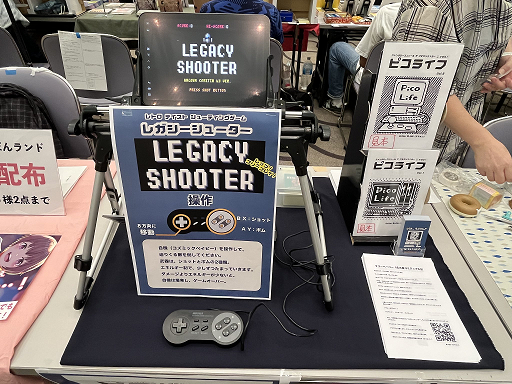

Marina: それで、イベントはどうでしたか?
"So, how was the event?"
Tano: 幾人の方に来てもらえて、PICO-8の種を蒔いたと思います。
"I believe we were able to have a few people come and plant the seeds of PICO-8."
Marina: すごい!では、コンベンションで何を披露しましたか?
"Cool! So what exactly did you show off at the convention?"
Tano: PICO-8で作っているシューティングゲーム「レガシーシューター」の試遊をしてもらい、このゲームについてや、自分の活動内容を説明しました。 希望者には、ファンジン「ピコライフ」を頒布しました。 また、その時用に作ったフリーペーパーと名刺も、渡しました。
"I offered a trial play of my shooting game 'Legacy Shooter' made with PICO-8, and explained about the game and my activities. I distributed the fanzine "Pico Life" to those who were interested. Additionally, I handed out a free paper and business cards that I prepared for the event."
Marina: では、既に関連している「PICO-8」の視聴者の皆様にとって、「PICO-LIFE」はどのような魅力がございますでしょうか?
So, what appeal does "PICO-LIFE" have for the already associated "PICO-8" audience?
Tano: 読んだ方が、「自分も何か作って発表しよう!」と思えるような魅力があれば良いと思っています。
"I believe it's good to have an appeal that makes readers think, "I want to create something and share it too!"
Marina: では、「Pico-Life」の今後に期待することは何ですか?
"So, what are your hopes for the future of 'Pico-Life'?"
Tano: 発行者の私自身のことですが、長く続ける事です。 ネタは、自分自身が活動をしていれば、得られますので。 あとは、興味を持って手に取ってくれる方が、増えたらと思います。 求めやすく、チープだけど面白い冊子を作って行きます。 同人イベントにも定期的に参加します。
"As the publisher myself, the important thing is to continue for a long time. By actively engaging in activities, I can gather materials and content. Additionally, I hope to attract more people who are interested and willing to pick it up. I will create easily accessible and inexpensive yet interesting booklets. I also participate in doujin events regularly."
Marina: つまり、貢献を通じて手助けをしている人々はジンを読むことができるということですか、それとも私がうまく翻訳できていないのでしょうか?
"So, you're saying that people helping you contribute get to read the zine, or did I translate poorly?"
Tano: 一言で言えば、「今の活動を長く続ける事です。」
"In short, it is about 'continuing the current activities for a long time.'"
Marina: あ、申し訳ありません。間違った翻訳をしてしまいました。面接に対してありがとうございます。そして、新しい「PICO-LIFE」の号を楽しみにしています!
Ah, my bad, I translated incorrectly. I think you very much for the interview, and look forward to seeing new 'PICO-LIFE' issues!
Tano: ありがとうございます。 個人で地道に楽しみながら、活動して参ります。
"You're welcome! I will continue to engage in activities diligently and enjoyably on a personal level."
![]()
PCM on PICO-8:
Recorded Samples
Recorded Samples
by Luchak
![]()
This is a followup to last month's article on how to play back PCM in PICO-8, and it builds on those ideas - if you're feeling lost, check out that article first!
Last time, we covered the basics of PCM audio on PICO-8: the importance of safety, the importance of timing, and how to use PICO-8's PCM API. This time, we'll talk about how to do something completely new: play back recorded sound samples on PICO-8. You can use these to play back almost any kind of sound: speech, birdsong, musical instruments, whatever you want.
The Process
In this article, we'll build a cart that lets you play back a sound sample by pressing ❎. To do this, we'll follow these 5 steps:
1. Select a sample.
2. Use Defy to convert the sample to a PICO-8 compatible format.
3. Convert the sample to a binary string and paste it into the cart.
4. Prepare the sample for playback.
5. Play back the sound.
The rest of the article discusses how these steps work, the decisions you'll need to make along the way, and what factors you should keep in. mind.
1. Select a Sample
This is the most important step, and the most important part is to choose a sample that you think sounds good. However, when choosing samples for PICO-8, there are two additional factors to keep in mind.
First, the samples should be short. PICO-8 carts are _tiny_, and cannot store much data. Also, indexing tables or strings more than 32767 entries long is cumbersome. So you'll want to keep your samples under about 5.9 seconds in length, and you should also consider using compression so they take less space in your carts. Compression comes at a small token cost later on, but it's still often worthwile - without it, you may only be able to store a few seconds of audio data in your entire cart!
Second, PICO-8's low sample rate means that some audio won't play back very well. Samples with a lot of bass or midrange content, like speech or music, should be okay. But samples that are almost entirely high frequencies, like cymbals, may get almost completely silenced in the conversion process.
2. Convert the Sample
The easiest way to convert samples to PICO-8 compatible formats is by using bikibird's Defy tool. It supports a wide range of formats, but for our purposes I would recommend considering only 8-bit Defy and the various QPA formats. But how to choose?
If you need the highest quality possible, or are very short on tokens, 8-bit Defy is an uncompressed format (really just 8-bit PCM with some header data) that can be played back directly.
If you want to store lots of audio data, or are short on compressed space in your cart, then the QPA format might be for you. (Full disclosure: I am the author of QPA.) QPA is an audio format designed for PICO-8 that provides a selection of different quality levels, with lower qualities producing lower file sizes. The lowest quality offers 7:1 compression! If you use QPA, you will need to spend about 250 tokens on decompression code.
3. Put the Sample In Your Cart
Next you just need to get Defy's output into your cart. I've written a small Defy-to-binary cart that lets you drop in a Defy file, allows you to preview the contents, and copies the file's audio data to the clipboard in a format suitable for pasting into your carts. Then you just need to paste your binary string into a line of code like this one:
sample_str="<pasted binary audio data here>"And now your sample is ready to use!
Keep in Mind
If you are pasting the binary string in the PICO-8 editor, it is very important to enter Puny Mode by pressing ctrl-P (cmd-P on Mac) before pasting, otherwise the pasted data will be corrupted. Press ctrl-P again after pasting to exit Puny Mode.
A few other notes on getting sound data into your cart:
- If you need more space, you can also put the sample data in other parts of the cart, like sprite or sfx space, but that's beyond the scope of this article.
- You can also use the Defy cart to preview your sounds and get strings for 8-bit Defy files. As of this writing, string conversion for QPA files should be added soon.
4. Prepare the Sample
When you start your cart, you'll need to read the sample and put its data into a table. For uncompressed 8-bit Defy samples, this is easy:
sample_data=pack(ord(sample_str,1,#sample_str))(You could also just read from the sample using ord() later, but doing it this way keeps the handling of compressed and uncompressed samples more similar.)
If you're using QPA, on the other hand, you'll need to decompress the audio data. Copy the qpa_cfg table and the qpa_decode_string() function from the QPA demo cart into your cart, and decode like so:
sample_data=qpa_decode_string(sample_str)5. Play Back the Sample
This is where it all pays off. We'll modify the code from the last PCM article to play back the sample when the user presses ❎.
sample_str="<audio data here>"
function _init()
-- decode an uncompressed sample
sample_data=pack(ord(sample_str,1,#sample_str))
-- for a compressed sample, you would copy qpa_cfg and
-- qpa_decode_string() from the qpa cart, and write:
-- sample_data=qpa_decode_string(sample_str)
-- track the sample position.
-- the sample will play when pos is a valid index into sample_data
pos=0
end
function _update()
-- on pressing ❎, start (or restart) the sample
if btnp(❎) then
pos=1
end
-- check to see if we need to generate audio
if stat(108)<768 then
-- copy sample to output
for i=0,255 do
if pos>=1 and pos<=#sample_data then
-- playback position is inside sample
poke(0x8000+i,sample_data[pos])
pos+=1
else
-- playback position is outside sample, poke silence
poke(0x8000+i,128)
end
end
-- send audio data at 0x8000 to the output
serial(0x808,0x8000,256)
end
endAnd that's it - have fun!
![]()
What's Next
The code in this article has some pretty severe limitations: you can only play back a single fixed sample, only a single copy of that sample can play at a time, and you can't control its volume or pitch. Perhaps you can think of how to address these issues - if you're interested, give it a try! But we'll come back next month and discuss how to build on the code above to write a cart that can play back multiple samples at once at different pitches.
- Luchak
![]()
Outstanding Outliers
The Icons of Horror
The Icons of Horror
![]()
Whatever your favorite way to ring in the fall season, one thing that makes it special is the Halloween spirit that possesses so many of us. Every culture has their own unique tales & traditions concerning death and the afterlife; superstitions and philosophies about honoring ancestors or spirits.
The ancient orators would relate stories of well-known ghosts or goblins from the locals, and word of mouth would carry some tales far and wide, getting adapted and refined along the way. Some of the most frequently repeated myths have made their way into modern popular media, providing us with a sizable cast of well known characters and creatures: vampires, zombies, shapeshifters, demons, witches, mummies, and more.
From this pantheon of anomalous archvillains we can name a few paragons who would live on in many incarnations of media. Classic novels have immortalized the legendary accounts of Dracula & Frankenstein’s Monster, while movies like George A. Romero’s Living Dead franchise laid the foundation for future hordes of bloodthirsty zombies.
In the infinite codex of video games, the horror genre holds much appeal from its ravenous fanbase. The libraries are littered with a robust selection of titles, some of which transcend the bounds of their consoles and have become a cultural phenomenon on their own. However you like your thrills, the many consoles released in the last few decades are rife with the icons of horror.
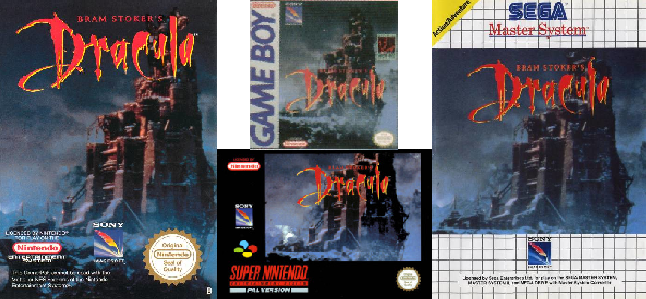
Bram Stoker's Dracula movie, inspired by the classic novel, triggered games spanning several genres. Across 8 consoles there are five games that are ports of the same platformer, 2 of the same beat 'em up, and one first-person action title.
Even among the platforming titles they cross the event horizon between 8-bit and 16-bit systems. While they are similar enough in look and style, the power of the processor shows right up front in almost every way; the NES version has its own game mechanics, shorter levels, and no major objectives aside from beating the boss at the end of each level.
The Genesis & SNES ports are like each other in these ways with the obvious differences between the two consoles being mostly audio & visual; basically, the overall experience is the same while the presentation is unique to the system.
Zombies have grown in popularity in the last decade or so, largely due to horror gaming. Many people were introduced to the concept of zombie hordes by the 1968 film Night of the Living Dead, a shining star of the genre that would leave an indelible mark on the horror landscape.
While other zombie movies gave many different reasons for the mindless menace, magical mind control in White Zombie and an unexplained pseudo-fungus in Splinter, the Romero Living Dead have been at the forefront of zombie culture and is often considered the framework of later zombie-types.
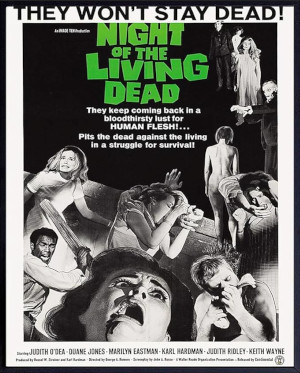
Though the zombie mania never truly died down in the movie medium, there was never more than a modest selection of games on the subject until 1996. “Alone in the Dark” made it into the Guiness Book of World Records for being “the first ever 3D survival horror game” and further laid the foundation for what would follow a few years later.
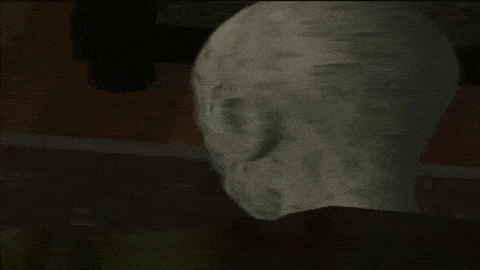
Resident Evil (aka “Biohazard”) made one of the biggest impacts of the year. Titles such as Parasite Eve & Dino Crisis would also find critical acclaim on the console with a similar formula as Resident Evil, further propagating the proclivity to install tank-style controls and cinematic camera angles into the games as a dramatic device.

The fright causes panic and confusion, then before you can orient yourself you are on the ground being devoured: Game Over.
House of the Dead is another title that relies heavily on combat with undead & other monsters using light gun technology in the arcade. Zombie games continued to multiply from here; as if mimicking the chain of infection as seen in these games.

The most significant spike in zombie mania from the previous decade would be in the phenomenon known as The Walking Dead. They would take the world by storm as they tackled the trope and even introduced their own unique twist to the way the world would try to survive amid an undead apocalypse.
These great games are enjoyable any time of the year as the Halloween spirit will continue to live on in our hearts. You never know what new or old games might be lurking around the corner, waiting for an unsuspecting user to innocently dust off their controller and step foot into the shadowy realm of horror.
![]()
Upcoming Jams in November 2023
![]()
We keep an eye out for PICO-8 friendly game jams coming in the next months and this month we have reached out to two very interesting ones with unique and challenging limitations. The hosts were happy to write to the PICO-8 community and invite you all to join the fun!
2-Buttons Jam
by Feldo

Many games use two action buttons in addition to their movement buttons. That’s great and PICO-8 friendly, for sure. But what about discarding those cumbersome excessive buttons and stick to only two of them?
The 2023 edition of this 2 Buttons jam is starting soon, and sticks to a simple rule: any submitted game should only use two buttons, no more.
It starts on November 3rd, and three words will then be revealed. They’ll constitute themes that could inspire you! To give you an idea, last year the given words were the following : PURSUE, JOUST and VINE.
You’ll have a little more than a week to submit your work, ending on November 12th. Of course, if you need teammates, you could search for them in the community page of the jam (including an itch forum) or by joining the jam discord server (Link on the jam page).
You can use any assets you want, as long as you respect their licenses of course.
Two Buttons, No More!!
Have fun :)
![]()
20 Second Game Jam
by xenobrain

Hello Pico-View readers! I’m xenobrain, one of the hosts of the 20 Second Game Jam!
This is a jam where you make a game that can be finished in 20 seconds or less. No, we’re not asking you to make a game in 20 seconds ? but to make a game that immediately grabs the player’s attention and can be understood just as quickly.
It’s a great way to try out new, experimental ideas and see how compelling they really are.
Maybe you’ll strike gold and want to expand your 20-second wonder into a full game? Or maybe you’re a fan of WarioWare and the idea of microgames appeals to you. Either way, these tiny little games are a lot of fun to make!
The jam is pretty long (3 November to 28 November) so it’s low stress and beginner-friendly. It’s a great one to join if you’re new to PICO-8, game jams in general, or both! You can even start early if you'd like.
This time we want the players to have more fun too so we’re asking everyone to submit a working web build. That way we can all hop from game to game at a breakneck pace, so the games can get more plays! Luckily PICO-8 has you covered for web builds!
This engine is a perfect choice for the jam. The same spirit of experimentation with tiny, easy to understand games that immediately grab the player’s attention already exists in the PICO-8 community and can be seen every time you SPLORE!
We had a couple of amazing entries made in PICO-8 last year:
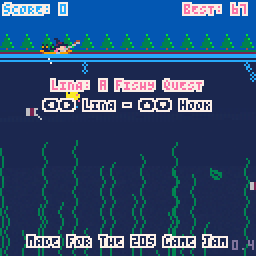
Sometimes our little witch needs some relaxation and Sour Cream demands fish for dinner, so let's help Lina find the perfect dinner!
Hook fishes to earn points, fish from the deep earn you more!
Avoid the Junk if you can, it will reduce your score!

You're cursed and in a foreign realm. Time resets every 20 seconds and you have to find your way out. Talk to the locals for information and secret techniques that might help you on your journey down into the depths in this 20 second long Metroidvania.
We’re big fans of Pico-8 and would love to see many more games this year made with this fantastic engine!
The 2023 20 Second Game Jam kicks off Nov 3rd (check the jam page to see the exact time in your time-zone). Most of the jam community hangs out on our Discord server. You can find the link on the jam page. Hope to see you there!
- xenobrain
![]()
Random Reviews
Game Recommendations on
New Releases: October 2023
Bacon Bacon Bacon
"BaconBaconBacon is a charming and expertly crafted match 3 game. The animations, sound design, and unique mechanics make this a puzzle game you'll want to return to."
-Wolfe3D
Lab cat
"A sokoban that can entertain even the most dopamine-addicted gamer, with its innovative mechanics, and masterful level design. Like most games it only has one thing to say."
-BlueChik
Suika Demake
"The streamer-bait sensation comes to Pico-8! The casual fruit-matching game is a great fit for the fantasy console, and Spoike has done the community a massive favour by implementing it for us so we don't have to.
The port is pretty faithful to the mechanics and aesthetics of the original. However, the physics is significantly more janky and fruits bounce around much more aggressively. This ends up putting a fundamentally different spin on the formula, allowing you to pull off different moves and strategies. Well worth your coffee break."
-C.Differ
Steel Surge
"What can I say? Stunning visuals, smooth gameplay, very polished and really fun to play! I keep finding myself playing over and over again, and this is coming from someone who's often intimidated by bullet-hells. There's variety in bullet patterns and play styles, yet it also feels simple to get the hang of, and just have a blast! c:"
-Glimm
Bun Bun Samurai
"Definitely an instant favorite as I love the honor code of Samurais. This game is a lot of action packed fun and who doesn't like a cool decapitation. Don't pass this game up. "
-Pico-8 Gamer
![]()
PICO-8 Hardware Gallery

The PICO-Planets must have aligned this month because EVERYONE was suddenly asking and talking about PICO-8 hardware!
Last month, a new Powkiddy handheld also released to market and stirred up a lot of buzz among the community because of its potentially-perfect-for-PICO-8 square screen! This month we had a great in-depth video from Krystman of Lazy Devs Academy which compares it to other similar handhelds as well.
You can see how hardware has been a major focal point in discussions across the PICO-verse.
So we caught that lightning and asked the community to take a picture of whatever console, handheld, raspberry pi, arcade, or anything else that they play PICO-8 on! And as a cherry on top, we also asked them to take the picture while running their favorite game.
We loved all the amazing responses and couldn't have asked for better variety! It was incredible!
So first, here's an overview of all the wonderful physical PICO-8 devices out there. Then we have a large image slideshow that includes more information we know you want to ask: (1) the type of device, (2) the game on screen, and (3) the lucky owner's username.
Thumbnail Gallery:
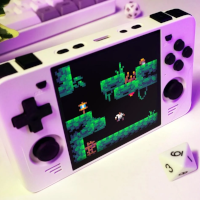



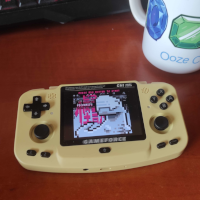
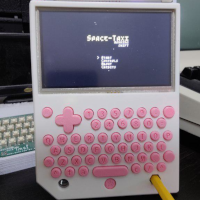
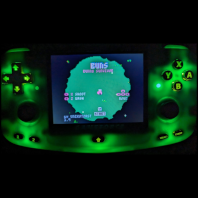
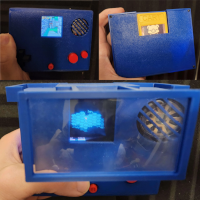
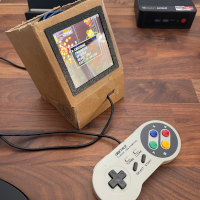

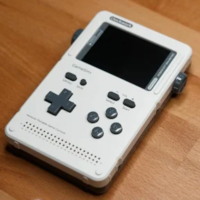
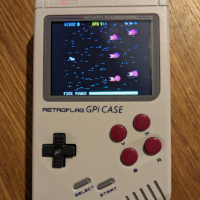
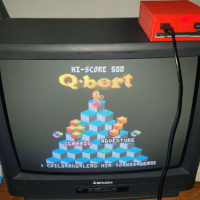
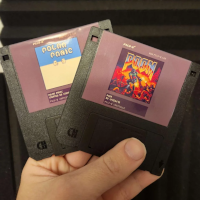
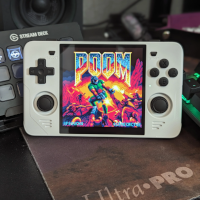
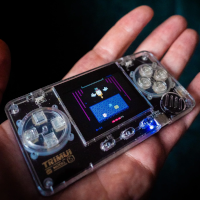
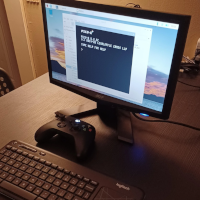
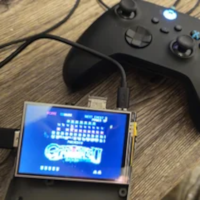

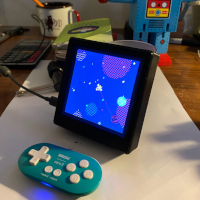

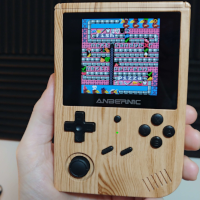

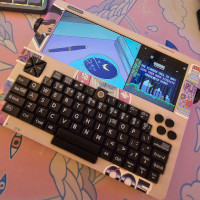
![]()
Slideshow Gallery with Details:
Once again the PICO-8 community does not disappoint with their generosity and we want to thank each and every contributor of these images for being a part of this incredible gallery. We hope it will inspire many more projects like them!
![]()
Prototype Party
![]()
Each month, this section of Pico-View will bring you a prototype with a focus on a unique mechanic or style. You can take the challenge of playing and getting the highest score or by putting your own spin on this prototype. Feel free to take the code from here and use it however you want!
This month's prototype is named "Candlelight Graveyard". It is a lot more developed than I usually make these prototypes because I wanted to add the Halloween theme, and probably got carried away. I normally try to just pick one style, mechanic, or function and focus on that each month, but this game has a few:

- lighting of the map using pal() swap and clip()
- sin() and cos() for rotation of the candles
- fillp() for drawing the grass light effect
- vertical levels using the full map for easy editing
I also challenged myself to use only 2 buttons in preparation for the 2-Button Jam happening next month. So for controls you only move left and right, with the arrow keys. The right button is also the action button to move on to the next level.
There are 8 levels total (0-7) and watch out for the last level because it has a real tough twist! So share a screenshot if you manage to beat the whole game!
Play it here:
We challenge you!
Take this prototype as a jump-off point to practice your skills, and add your own flavor to it. The only requirement is to use the mechanic of controlling multiple objects that rotate like our candles in your game!
How to Share
You can post your spin-off on the BBS, tweet it with the hashtag "#picoview", and join our Discord community if you have questions or want to share your progress. Here is the game cart if you want to see how we made it!
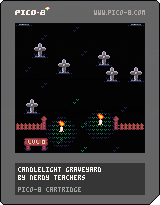
![]()
Closing Remarks
Thank you for reading this tight packed spooky themed October issue of the Pico-View web-zine! We hope you enjoyed all of the articles this month. Here are the folks who helped piece the zine together one pixel at a time...
-Werxzy - Cover Art & Illustrator
-MarechalBanane - Article Writer
-Buck - Article Writer
-Sourencho - Article Writer
-Luchak - Article Writer
-KumaKhan22 - Article Writer
-Tano - Interviewee
-Marina - Interviewer & Zine-founder
-Achie - Game Reviewer, Article Writer, and Zine Coordinator
-Gravitoid, Pico-8 Gamer, Sign, Krystman, Extar, Achie, NerdyTeachers - Cre8 Jam Judge Reviewers
-Pico-8 Gamer, Wolfe3D, BlueChik, C.Differ - Random Reviewers
- The Tech Dweeb, theEsel01, ray_blake800, pancelor, 2bitchuck, phidinh6, antfortytwo, aus72, CounterAdmiralSvven, DOGNLABS, Far_Faithlessness724, fiftythirth, mesamunefire, GammaVolantis, icegoat9, GexGecko, Celesmeh, Pico-8 Gamer, Achie - Hardware Gallery Contributors
-NerdyTeachers - Editor-in-Chief, Article Writer, and Illustrator
Thanks to all the authors, contributors, and readers for supporting our PICO-8 zine! If anyone would like to write an article, share pixel art, or help with anything contact @Marina Makes or @NerdyTeachers on twitter or Discord.
-Nerdy Teachers
18250
22 Oct 2023




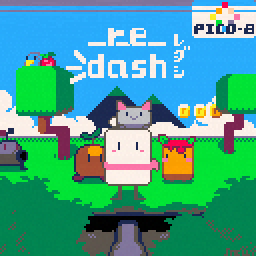
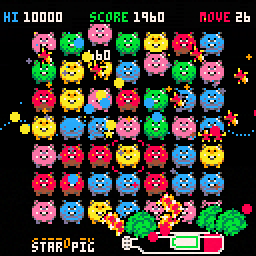
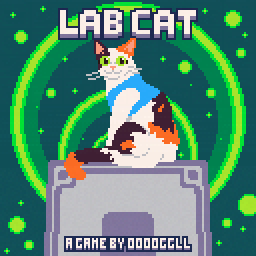


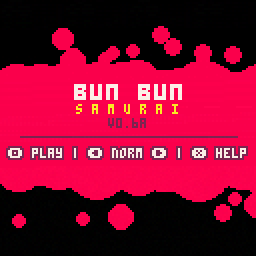
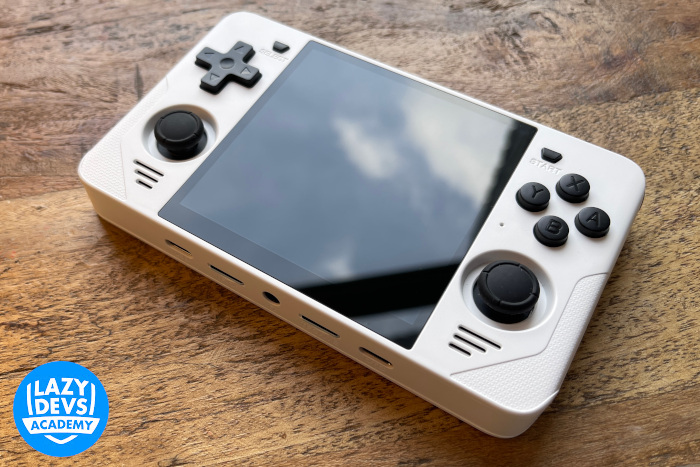 Watch Here
Watch Here
